
The ultimate guide for your first trip to Morocco
Colors, scents, flavors, welcoming faces: Morocco is love at first sight. As frequent visitors of this magnificent country, we are…
“Without seeing Sicily, one cannot understand Italy. Sicily is the key to everything.” Johann Wolfgang von Goethe
Sicily is like a kaleidoscope of emotions and colours, an island that captures the heart and soul of anyone who sets foot there. Every corner tells a thousand-year history, including ancient ruins, Baroque cities and breathtaking landscapes that plunge into the blue Mediterranean Sea. An experience that wraps you with its citrus and sea scents and captivates you with its vibrant and authentic spirit.
This year we were captured by the wonders of Sicily twice and want to share with you the beautiful places we saw, the good food we ate!
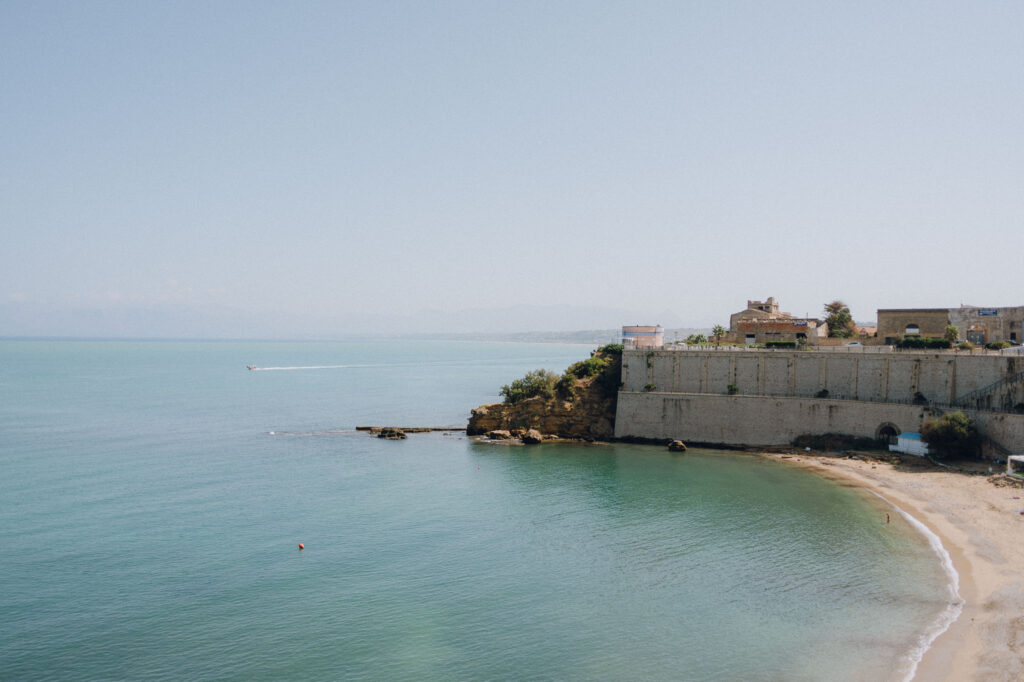
The first journey begins in Catania.
Catania is like a book full of compelling chapters, with its bustling streets, colourful markets, and pulsing energy in every corner. Such as at the Fish Market: a unique sensory experience to immerse yourself in local traditions and savour the fresh catch of the day. We recommend a stroll along Via Etnea, the very lively and animated main street, ending with a great lunch or snack at Pasticceria Savia, “Catania’s living room,” where you can taste the yummiest arancini in Sicily!
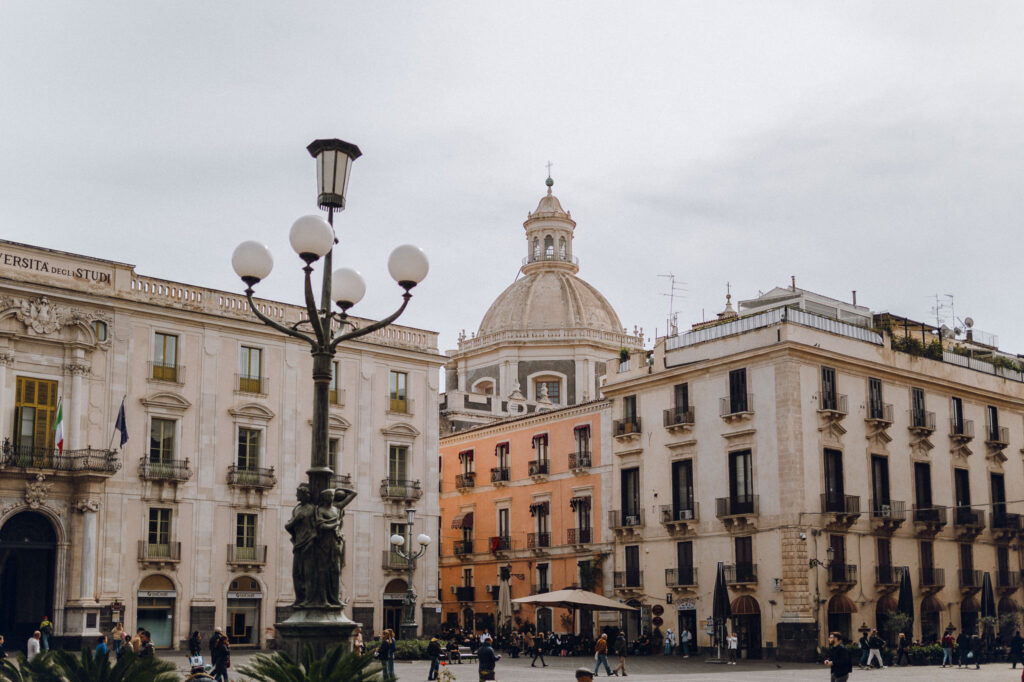
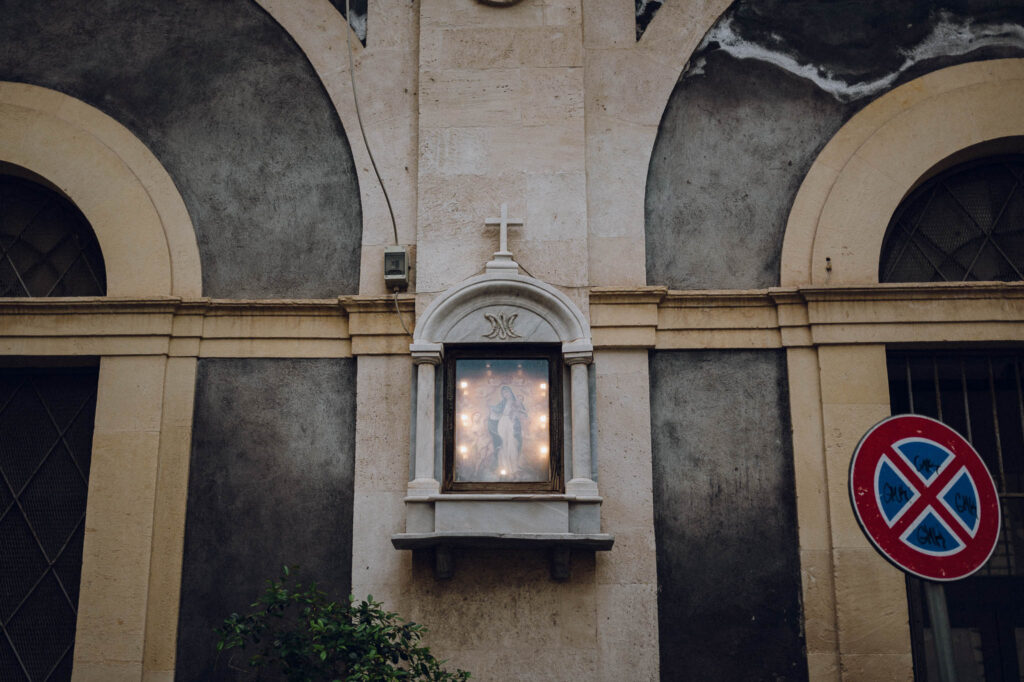
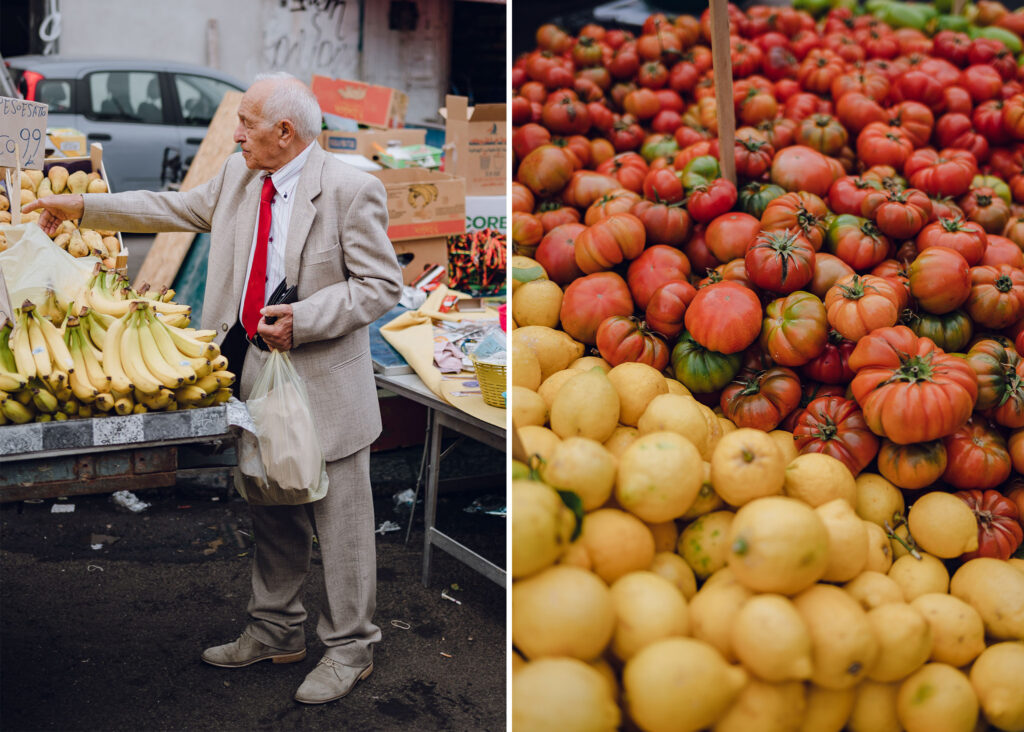
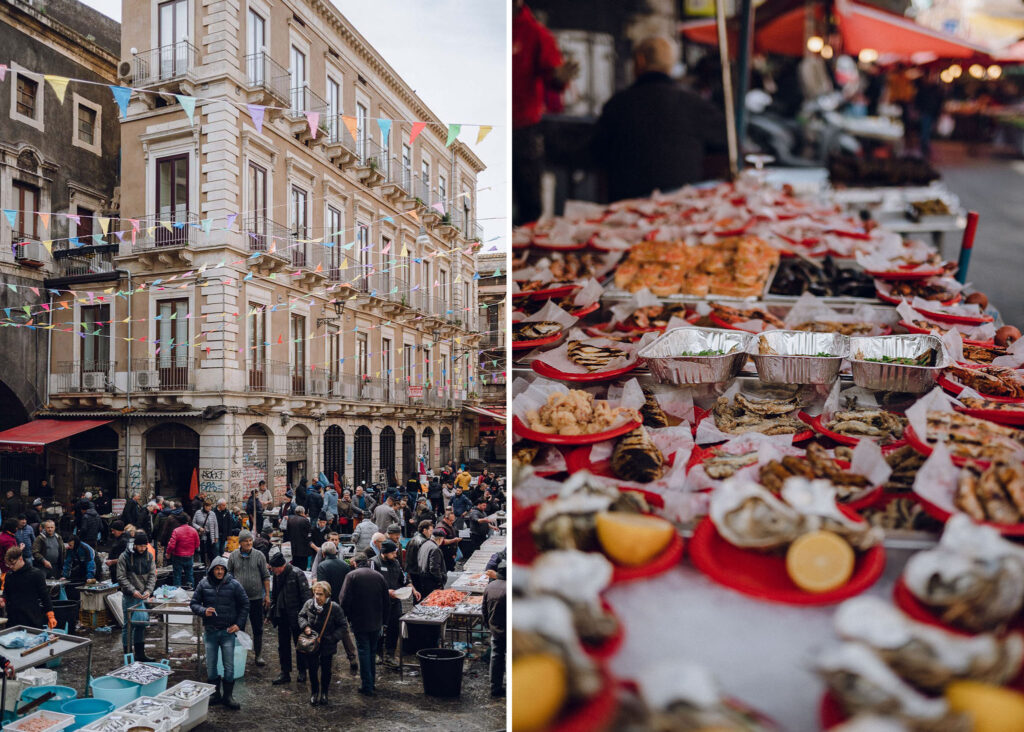
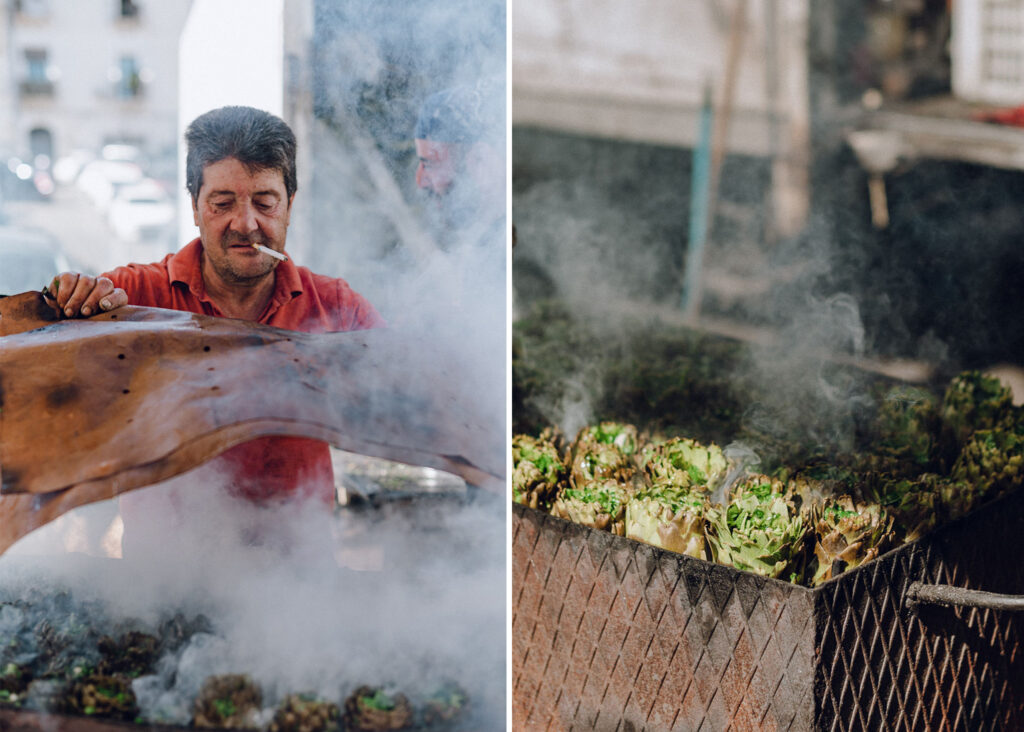
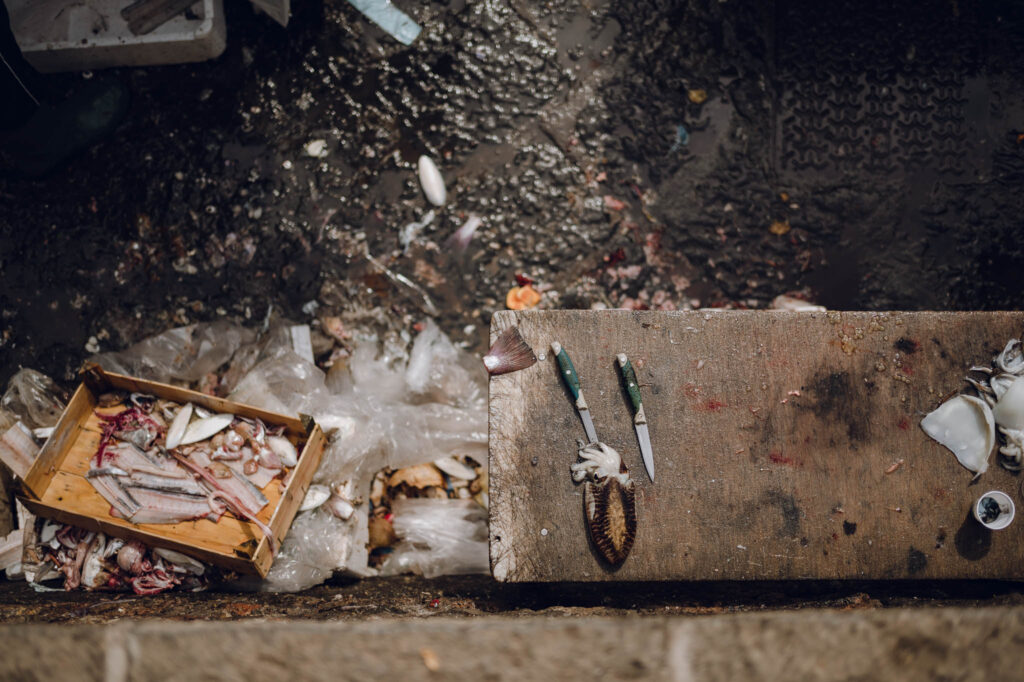
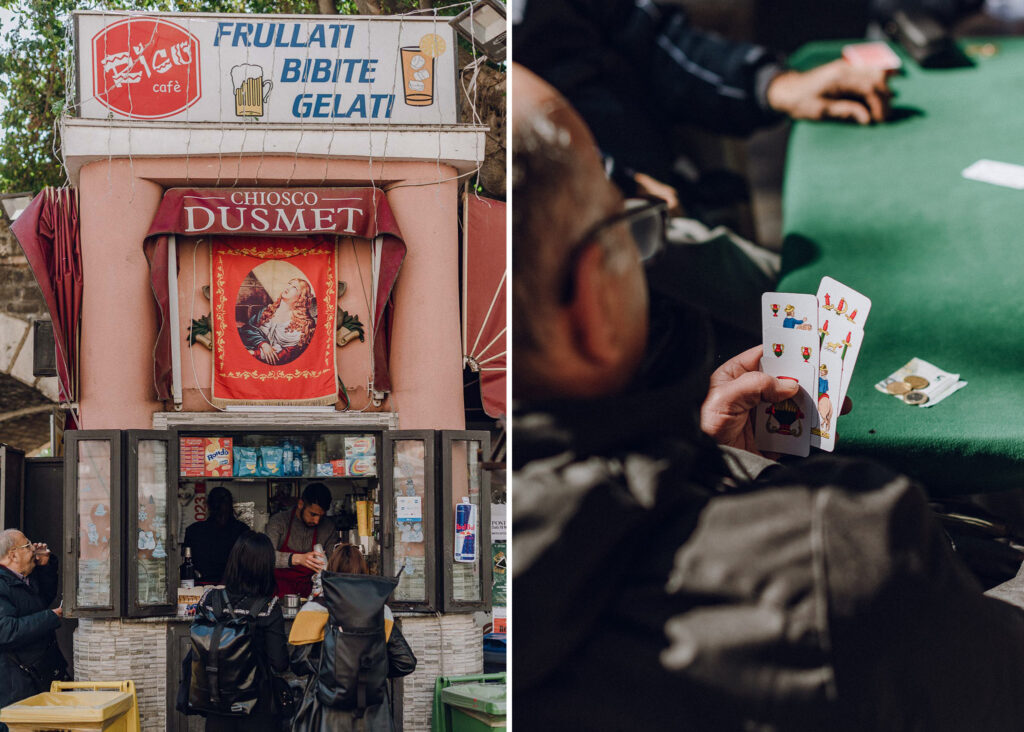
In less than an hour by train from Catania, we reach Taormina, a charming, seductive diva full of charm. With its breathtaking backdrop of mountains and sea, this pearl of Sicily enchants visitors with its ancient theaters, scenic gardens, and historic alleyways.
It’s the perfect place to immerse yourself in the Sicilian dolce vita and be lulled by timeless beauty. Don’t miss:
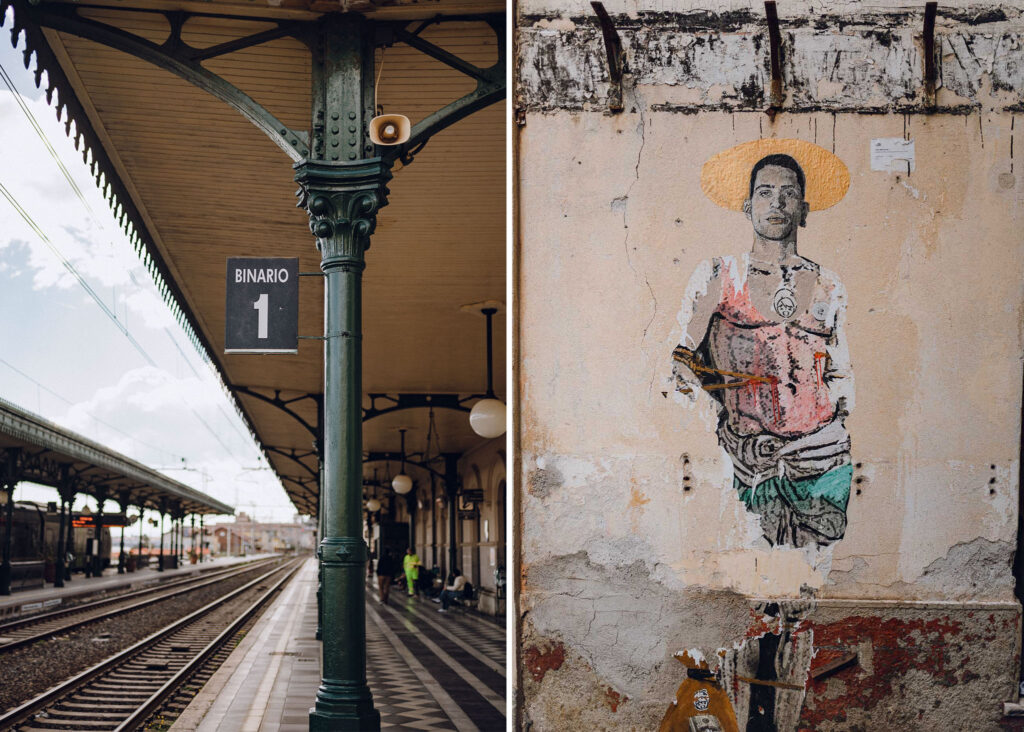
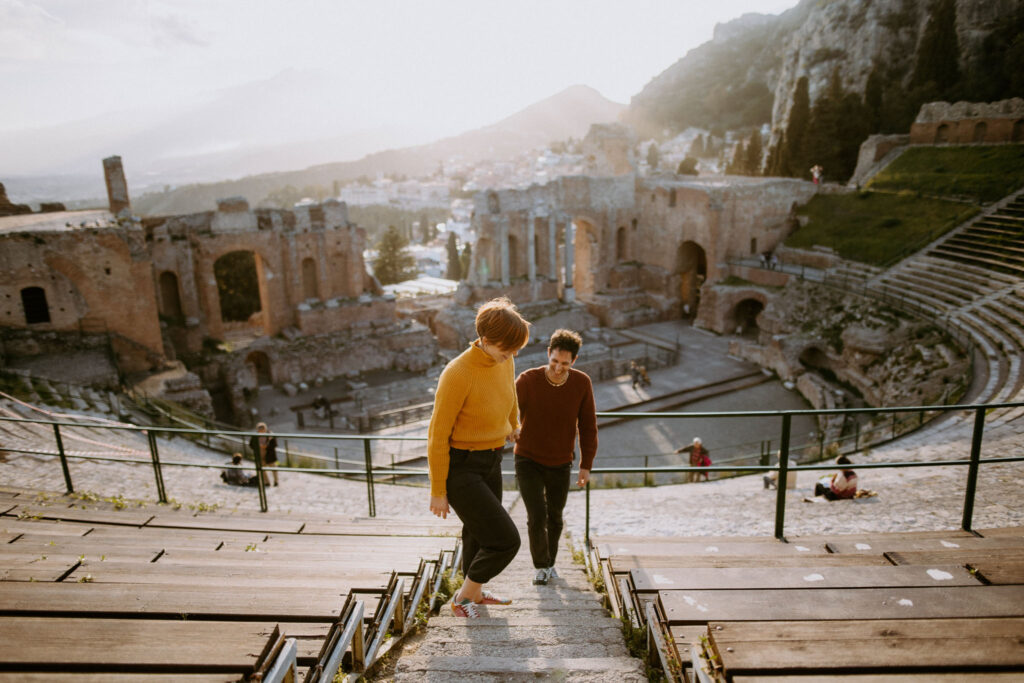
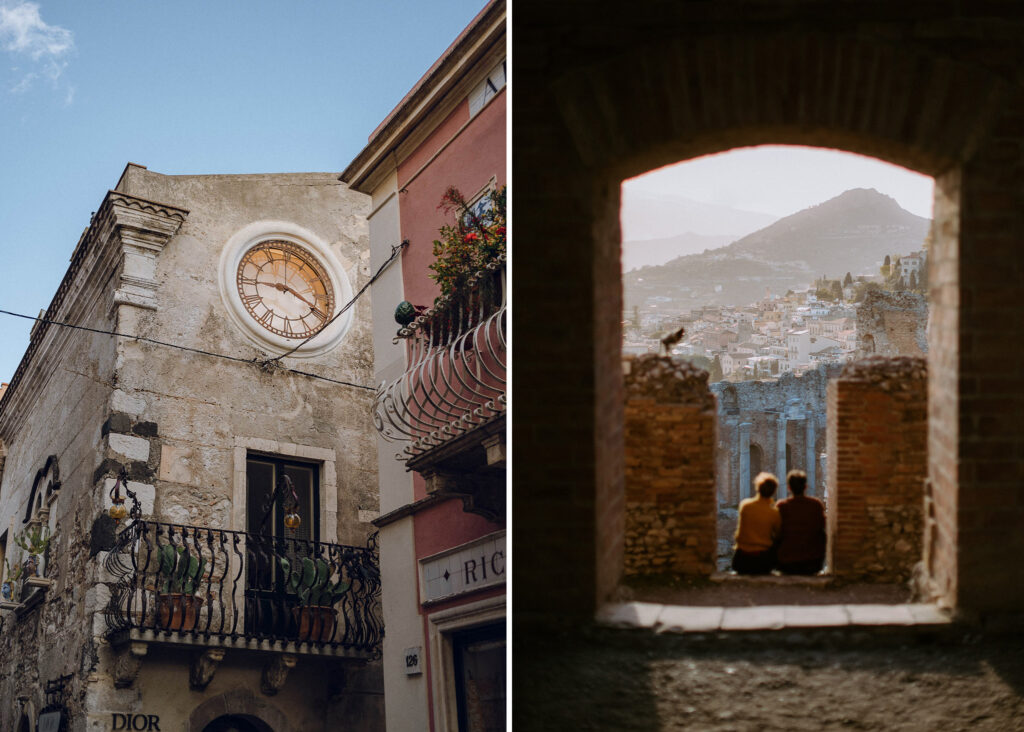
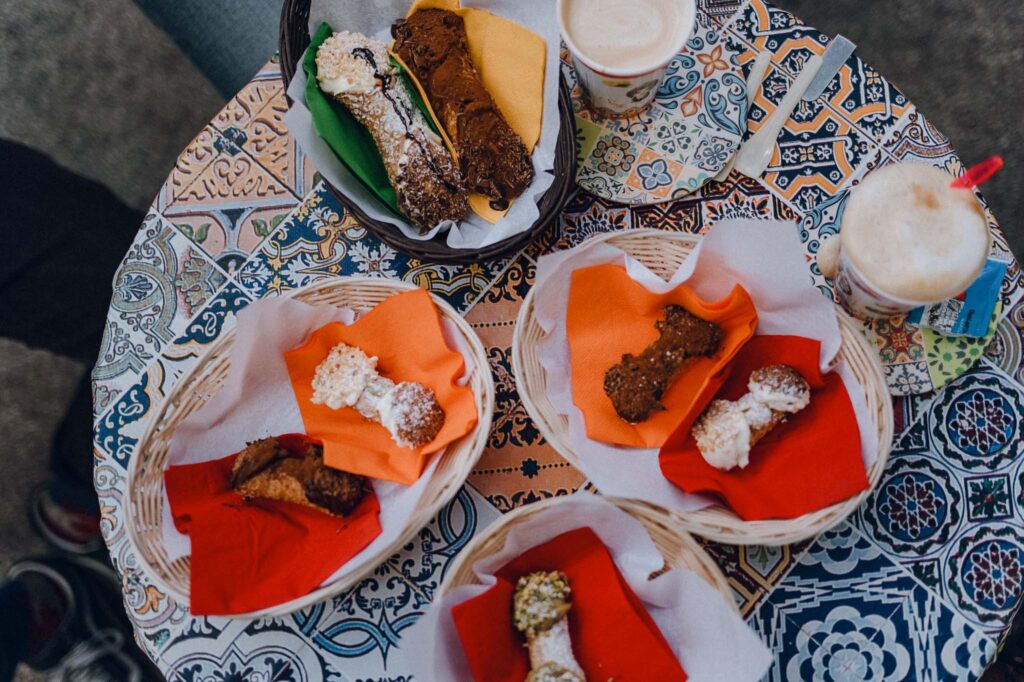
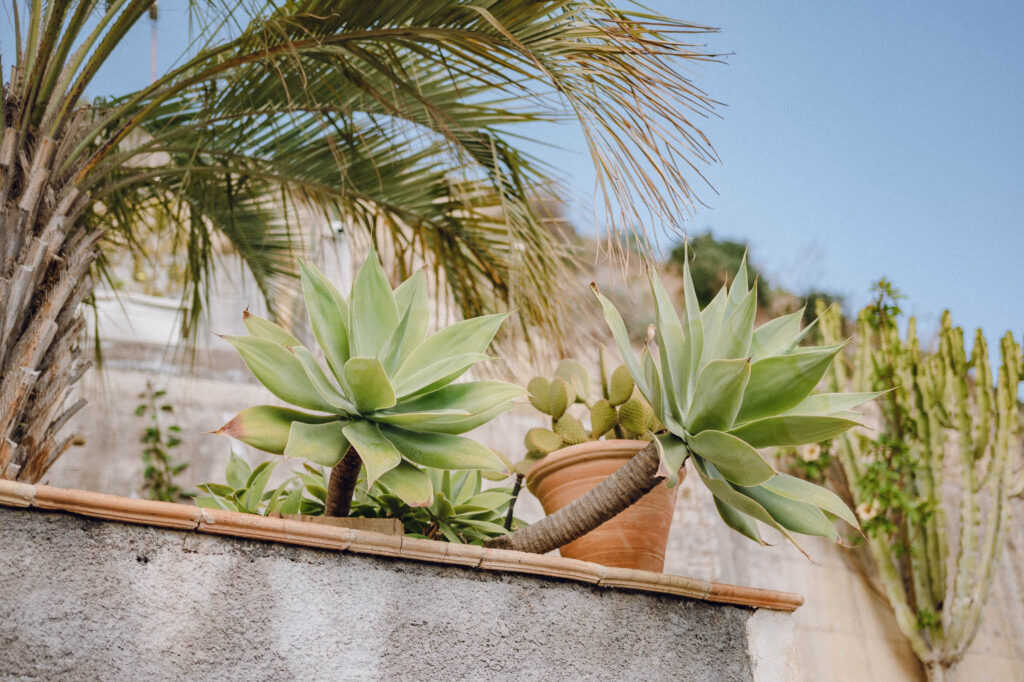
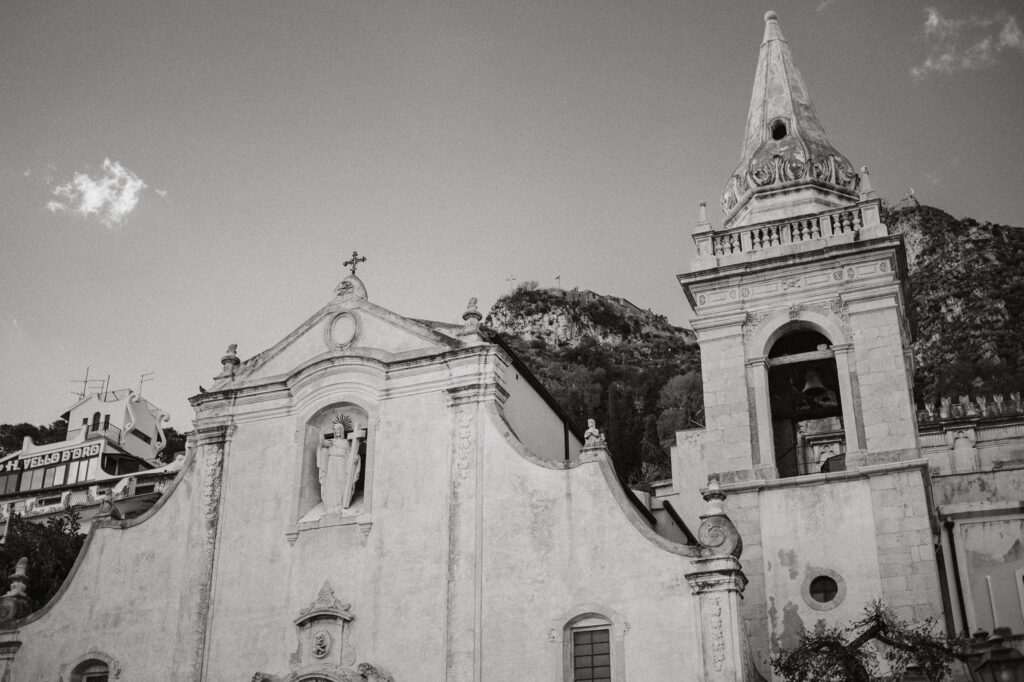
Another train trip takes us to Syracuse and Ortigia, magical places where time seems to stand still, with Baroque churches, lively markets and enchanting beaches capturing the imagination of every traveler.
After a stop at the Neapolis Archaeological Park in Syracuse, set in extraordinary natural scenery, we enter the city and visit Piazza del Duomo: a magnificent cathedral, with its Baroque facade and Moorish bell tower. For the rest of the day we get lost in the alleys of Ortigia Island, and a stroll along its waterfront led us to Osteria Sveva, a highly recommended stop, mouth-watering dishes and very friendly staff.
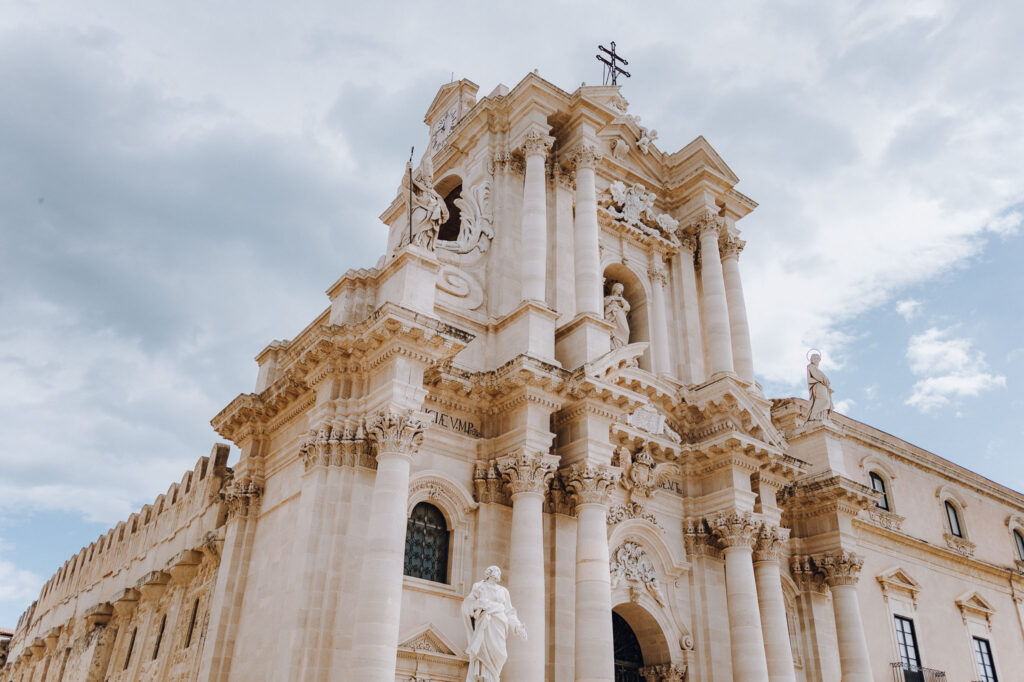
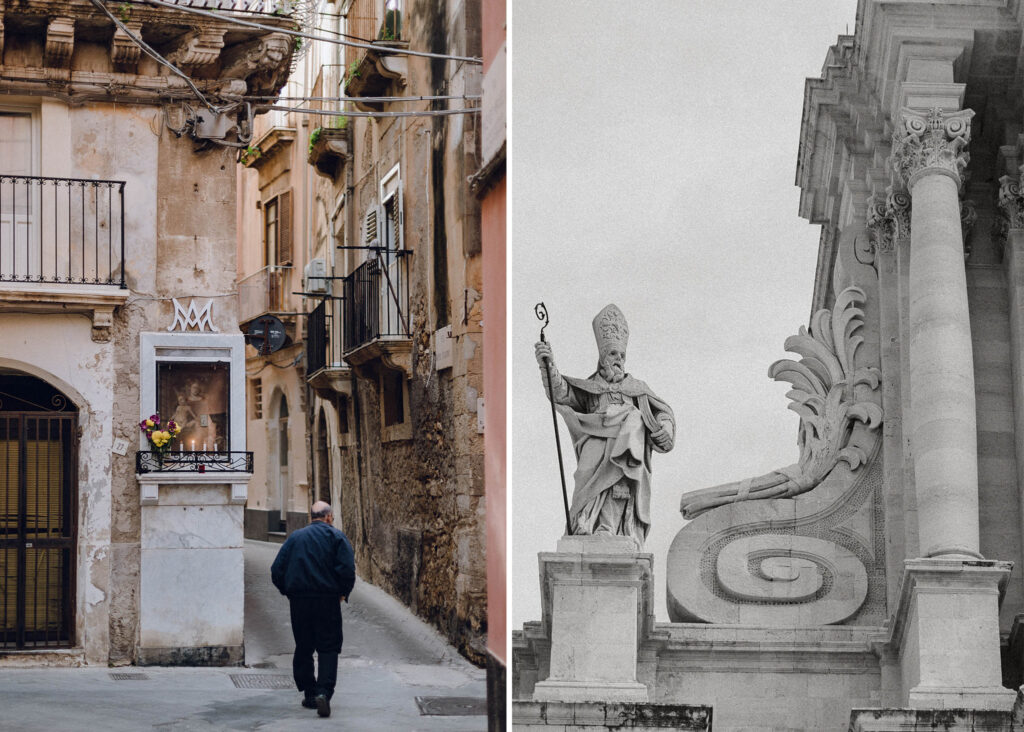
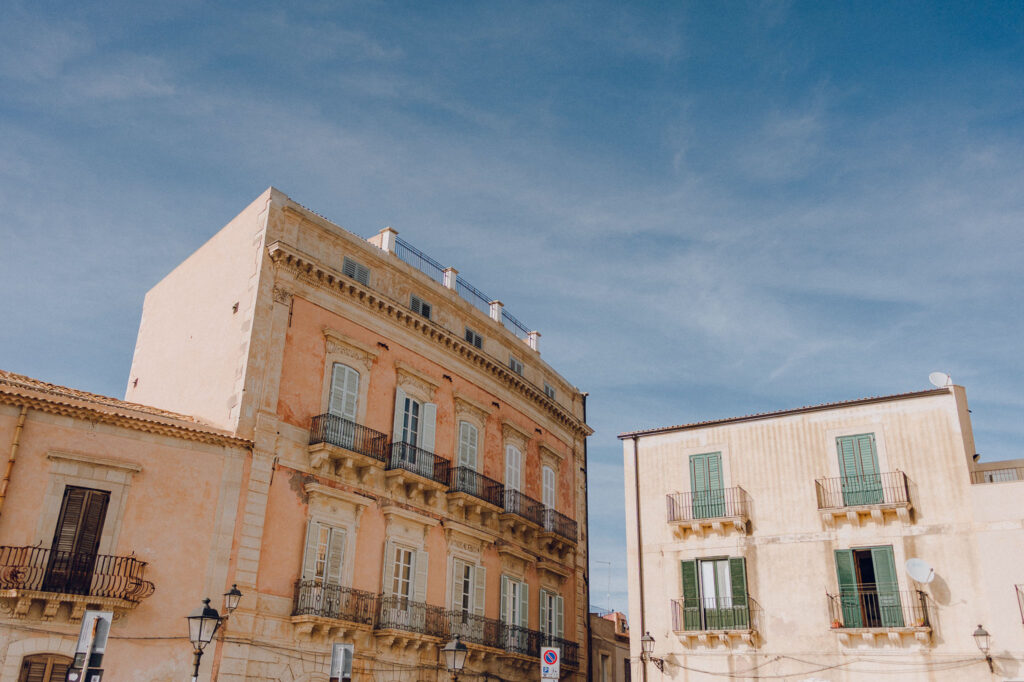
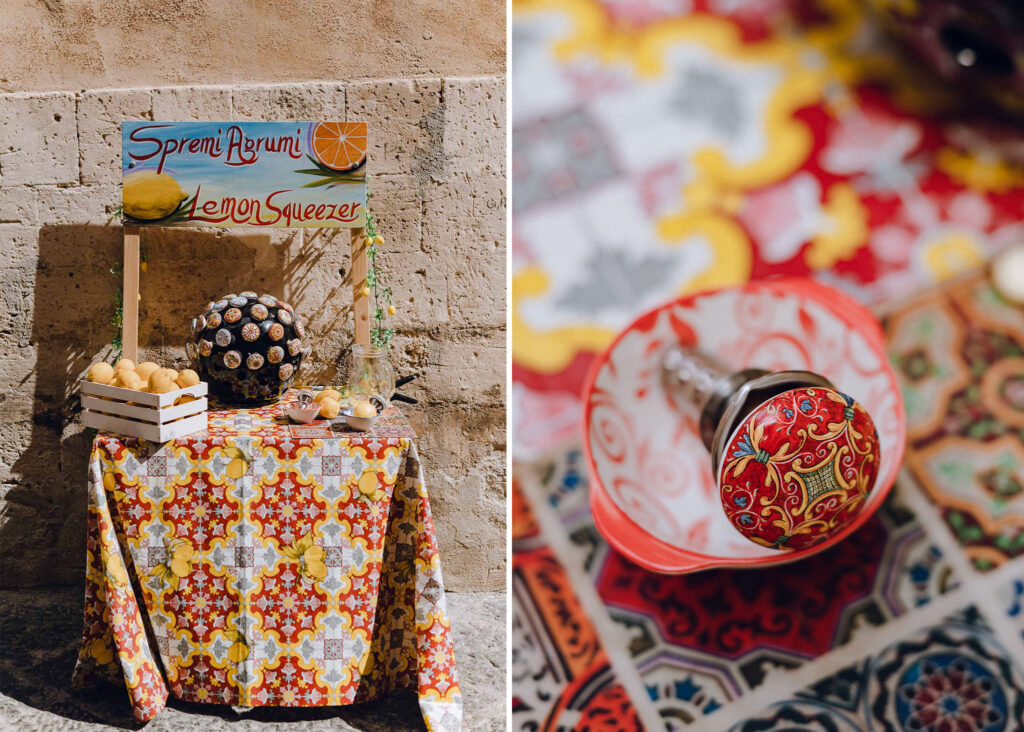
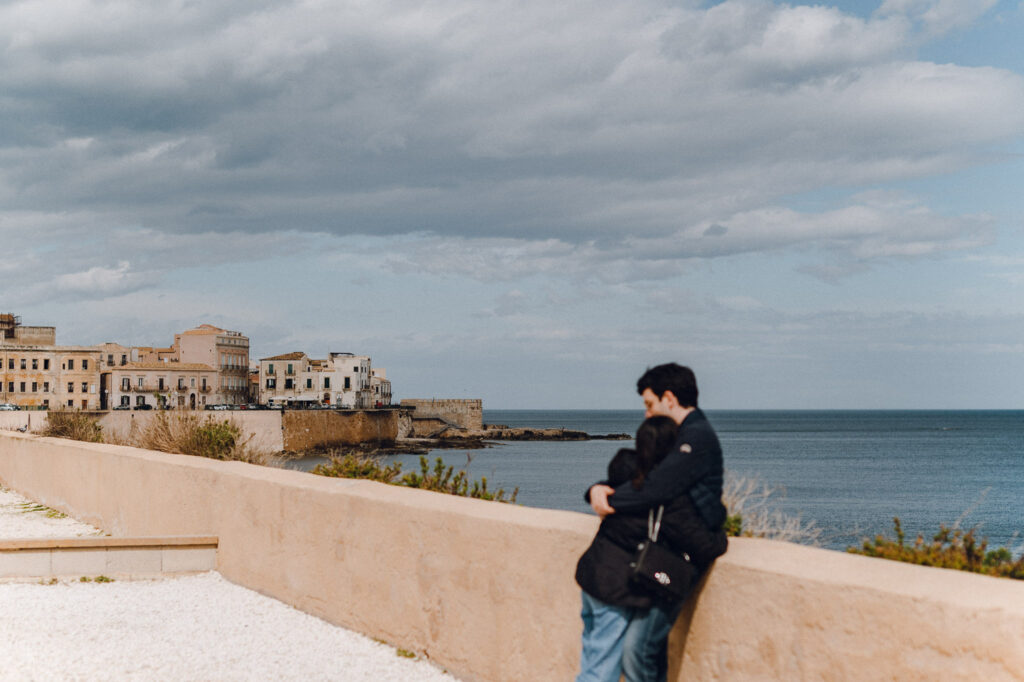
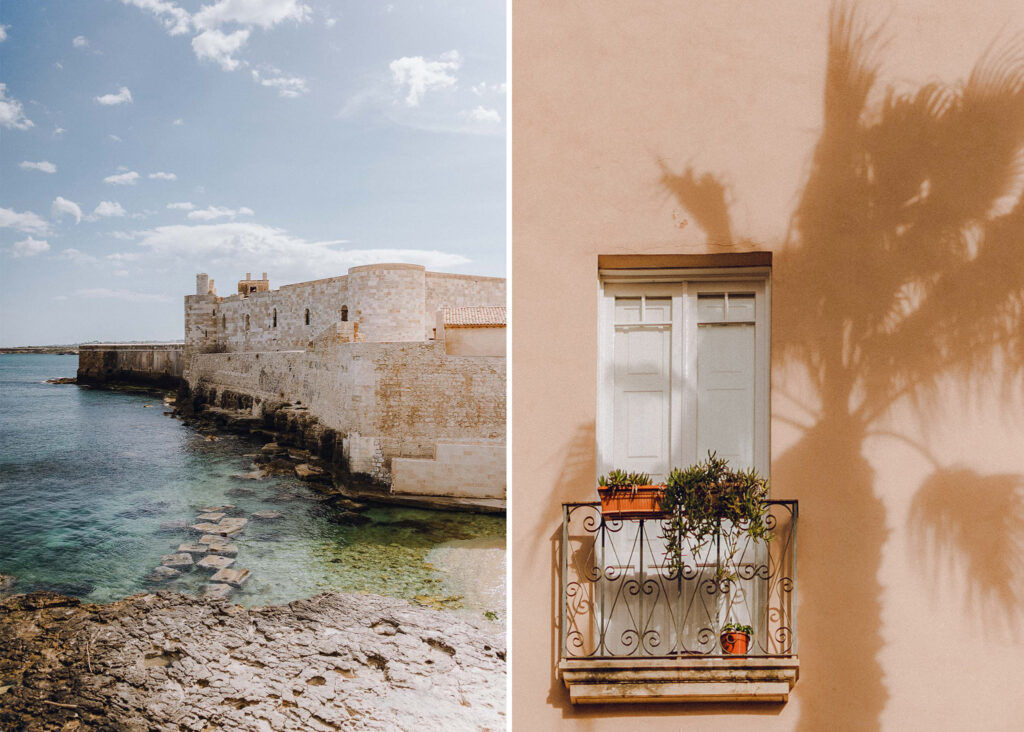
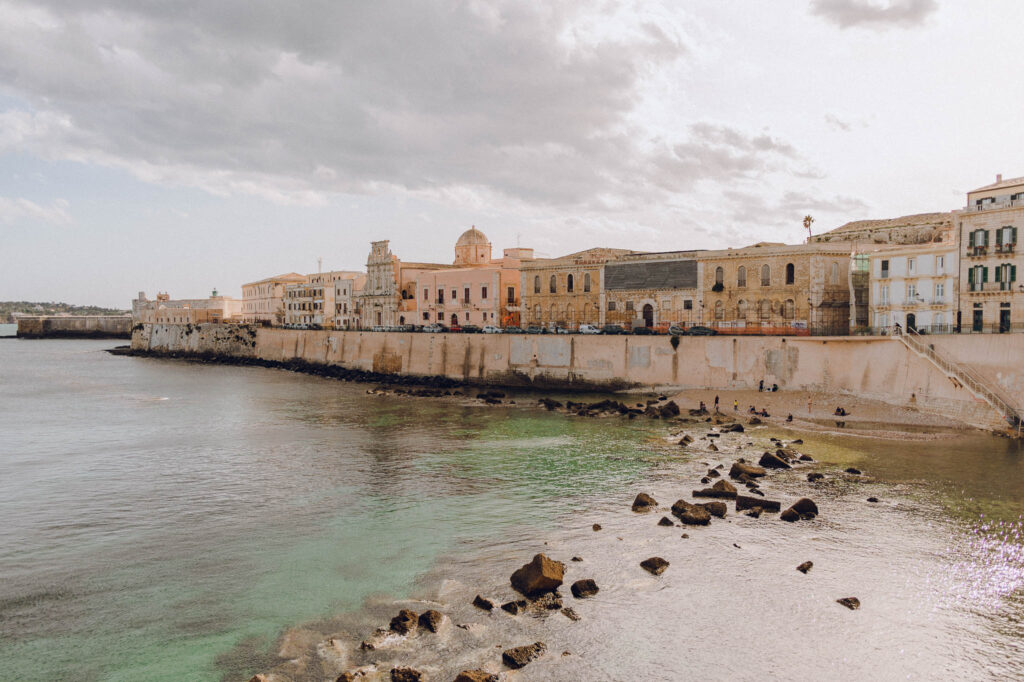
Our second Sicilian trip of the year, takes us in Palermo, a kaleidoscope of cultures and traditions, a vibrant melting pot of colours, flavours and sounds that enchant the senses and stir the soul. With its crowded markets, chaotic streets and historic monuments that stand majestically, the Sicilian capital is a city that never ceases to surprise and fascinate.
There are many must-see stops; let’s try to make a selection:
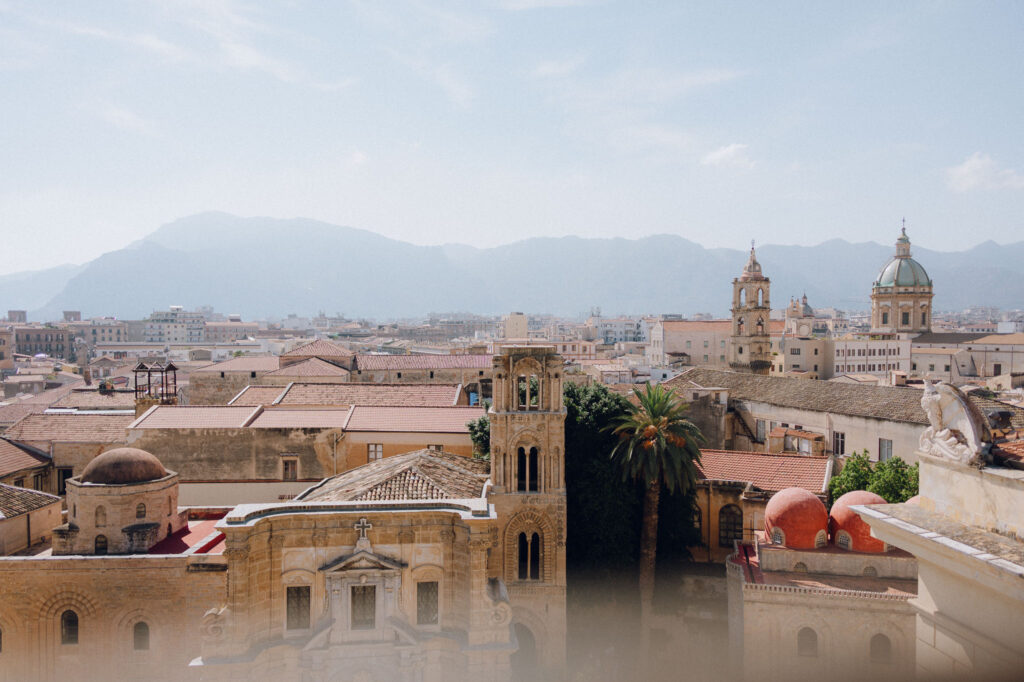
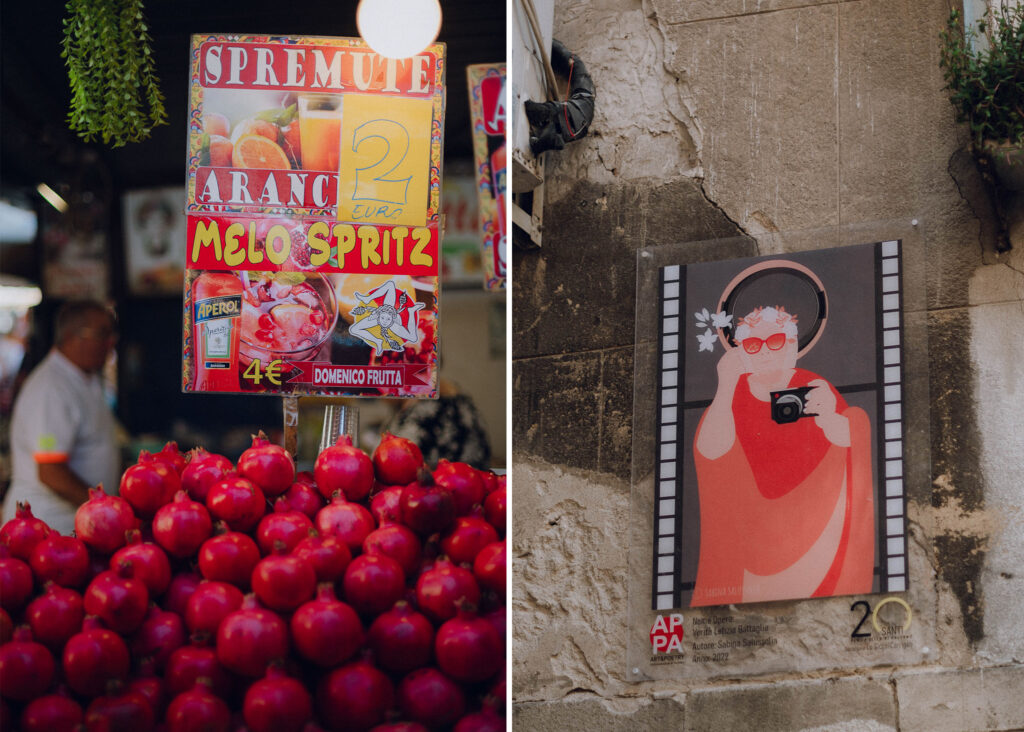
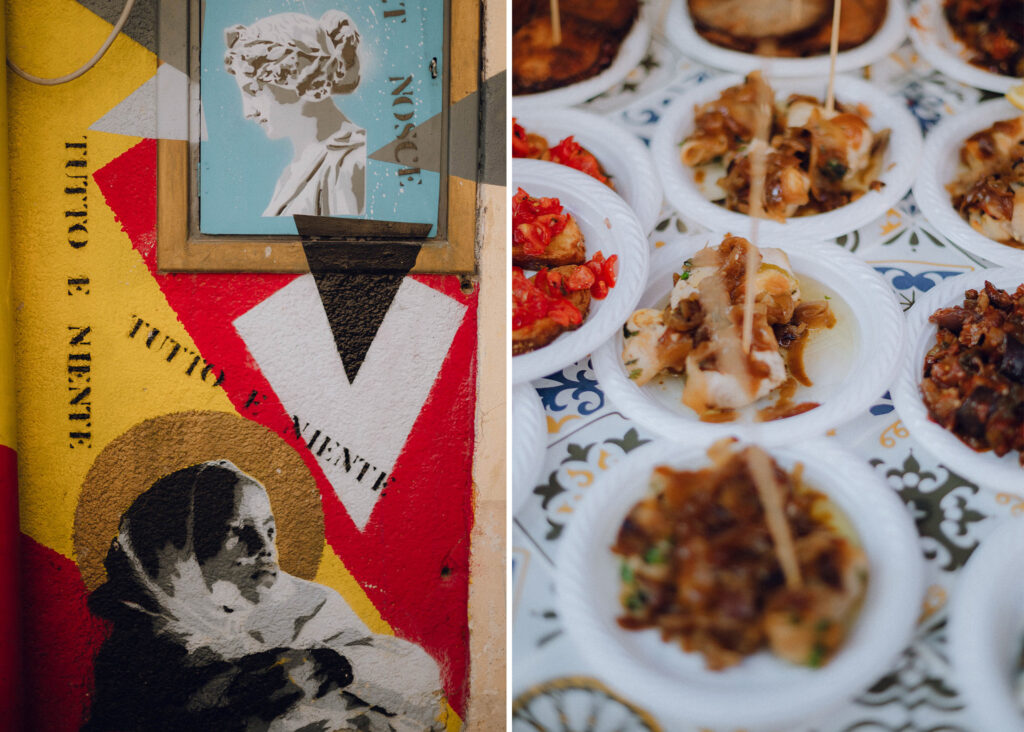
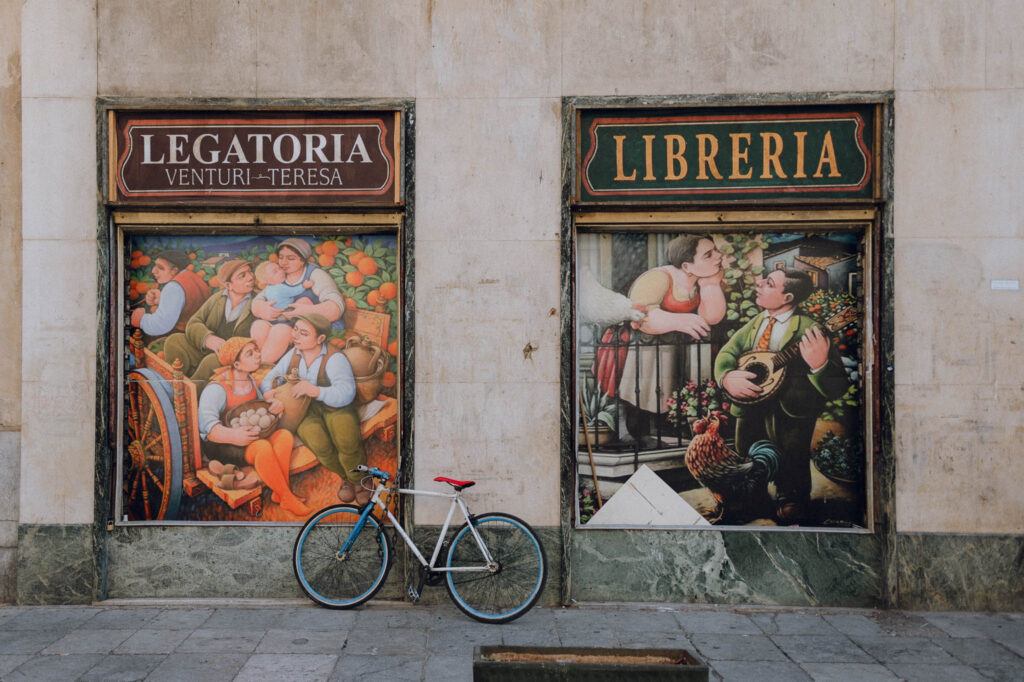
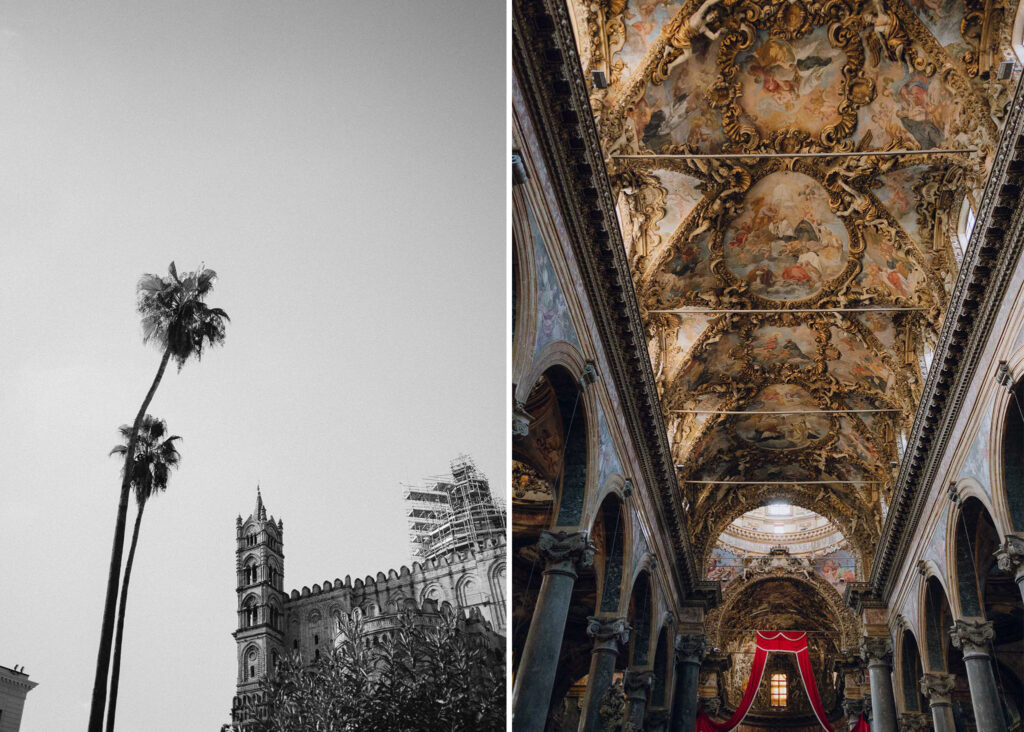
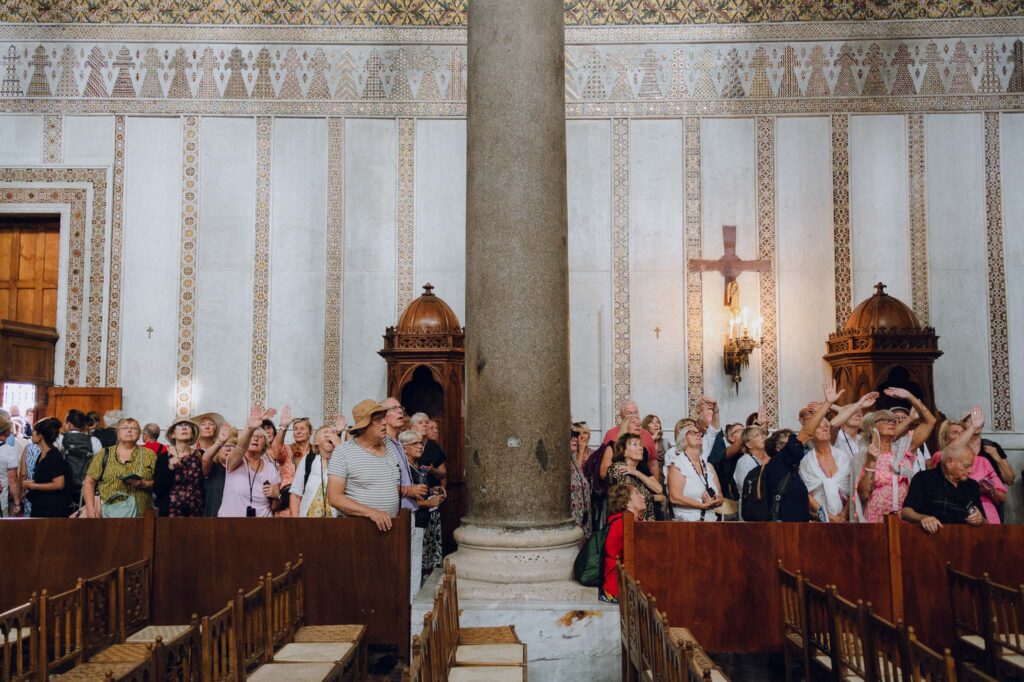
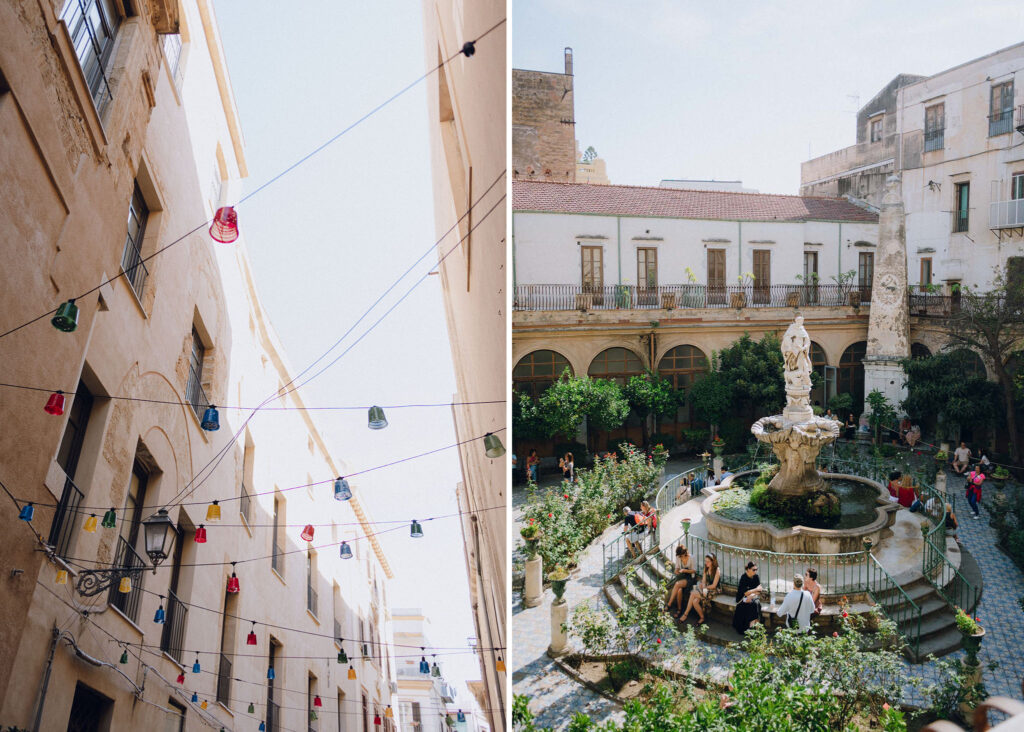
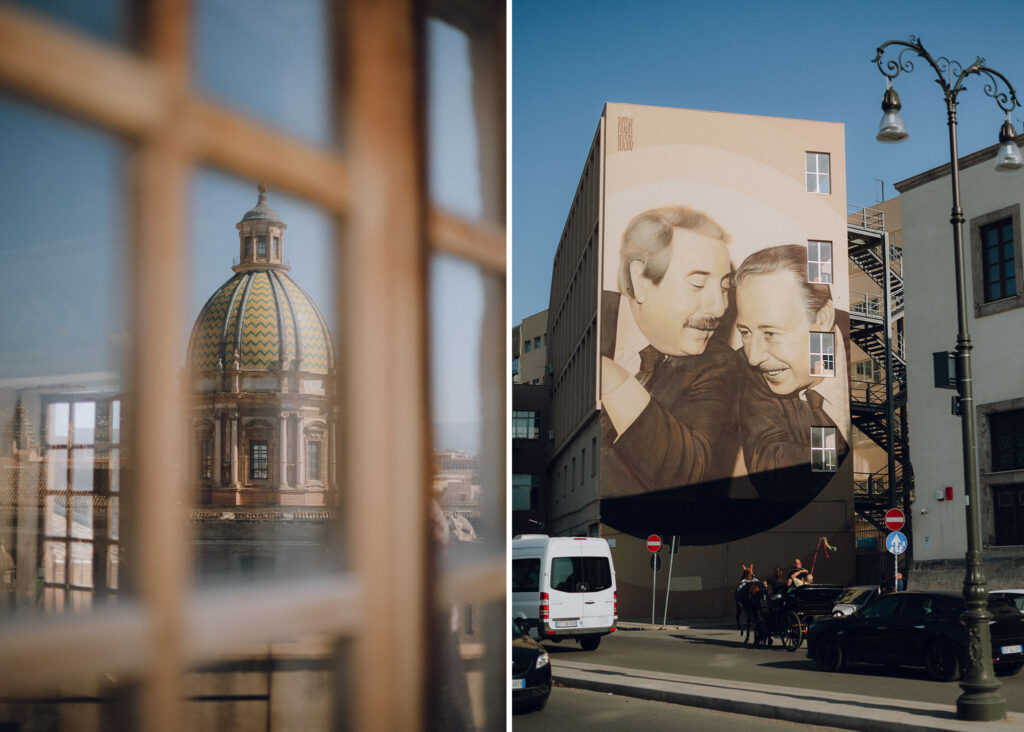
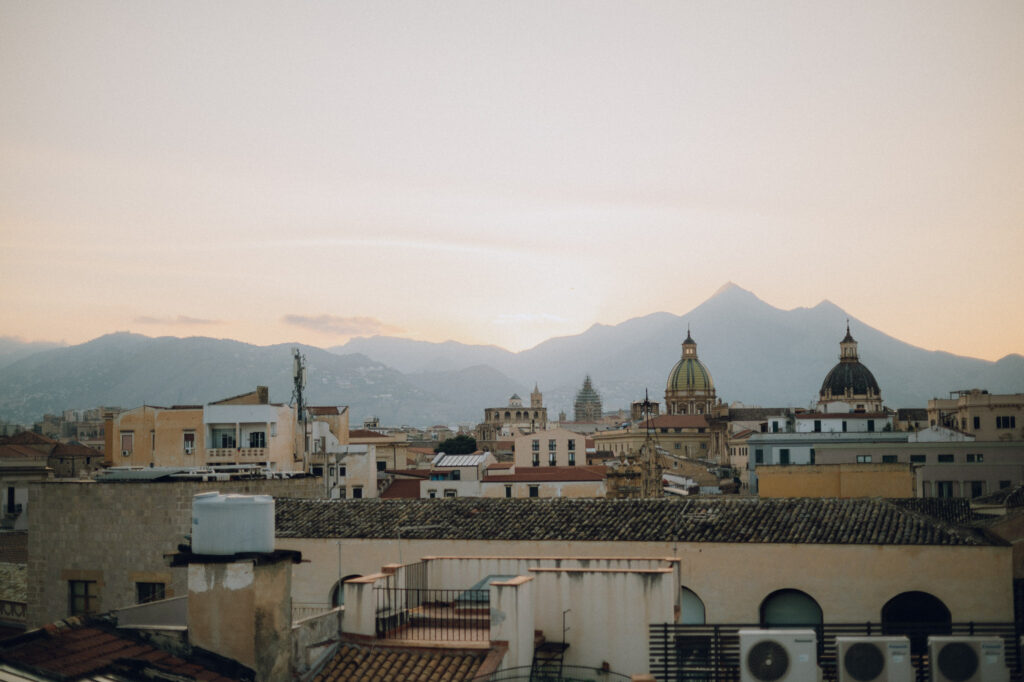
During our stay in Palermo, we spent one day in Cefalù, a picturesque seaside town, although quite touristy even if it was the end of the season. Its historic center, characterised by narrow cobbled alleys and charming squares, tells centuries of history through its monuments and architectural evidence. In the center of the city stands the Cathedral, a masterpiece of 12th-century Norman architecture, with its imposing facade decorated with Byzantine mosaics depicting stories from the Bible. One of Cefalù’s most iconic points of interest is the Rocca, a limestone hill that rises above the town, offering spectacular views of the coastline.
Having lunch at one of the restaurants overlooking the sea is really a must.




Renting a car in Palermo, we reach Scopello in about an hour.
Scopello is like a picture-perfect postcard, with its crystal-clear waters, jagged cliffs and breathtaking landscapes that enchant the eyes and fill the soul with wonder. This small fishing village is an oasis of peace and tranquility, where time seems to pass slowly and the beauty of nature reigns supreme.
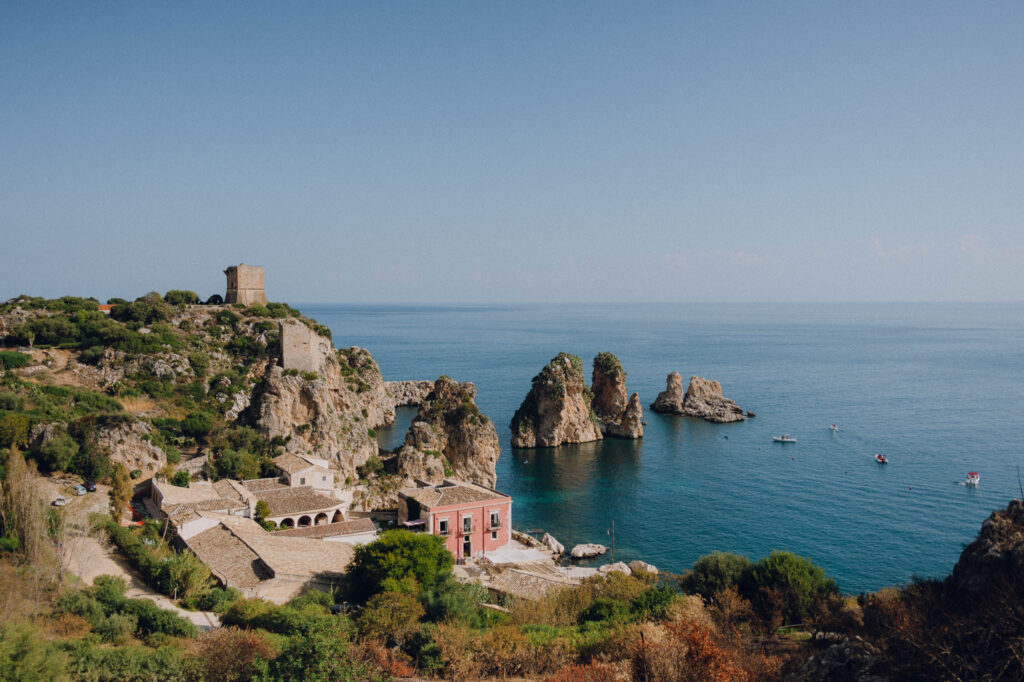
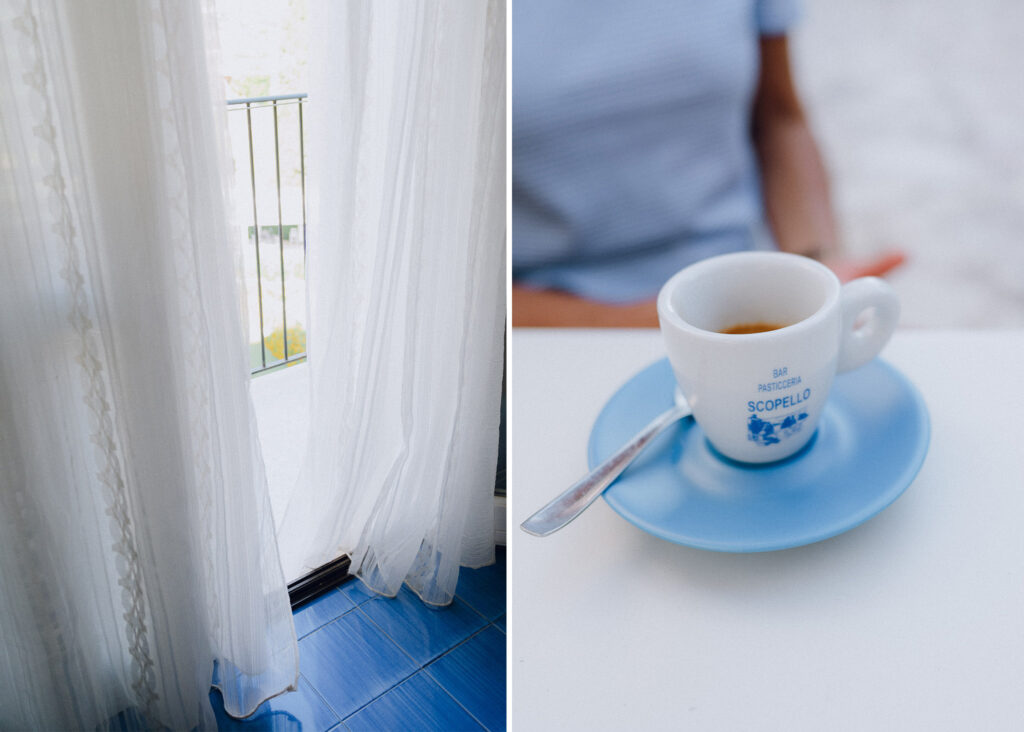
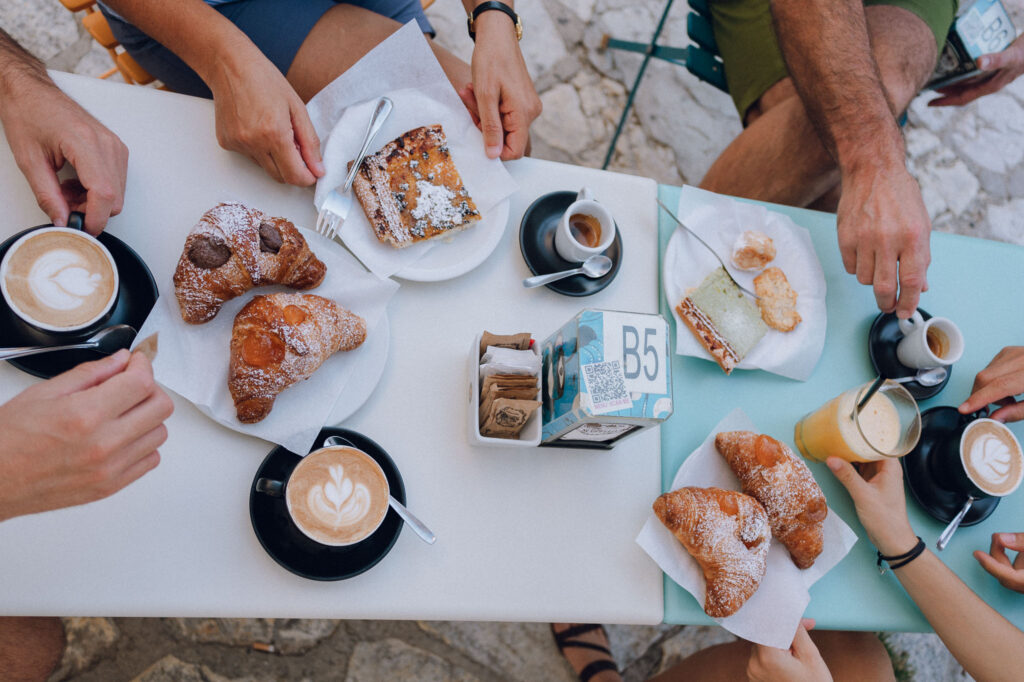
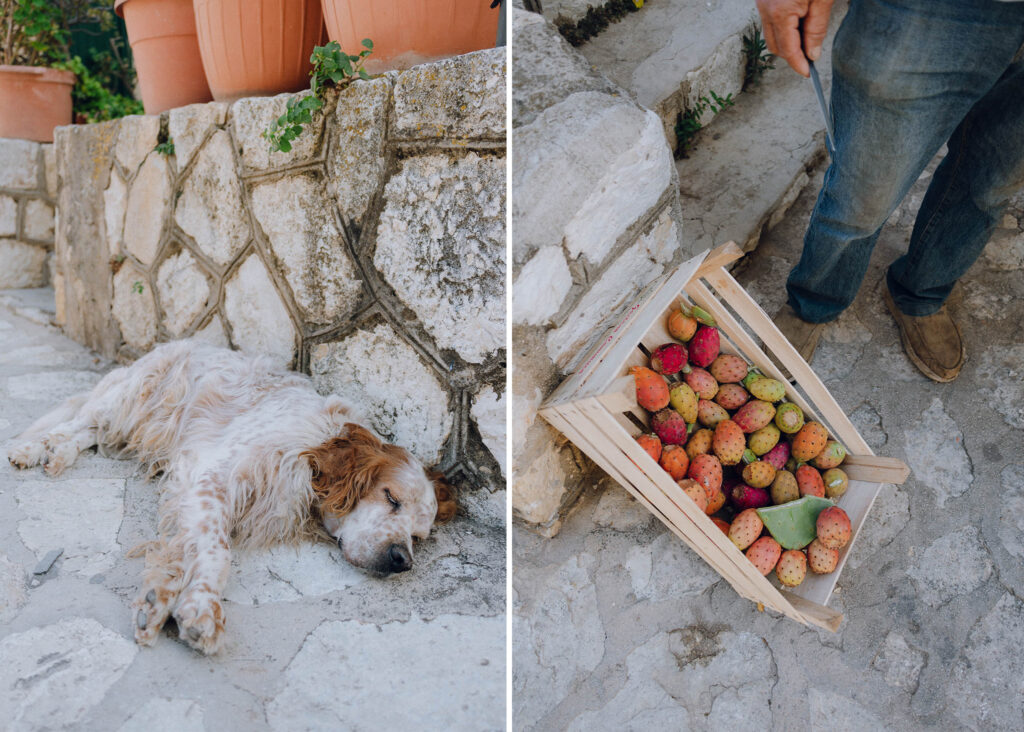
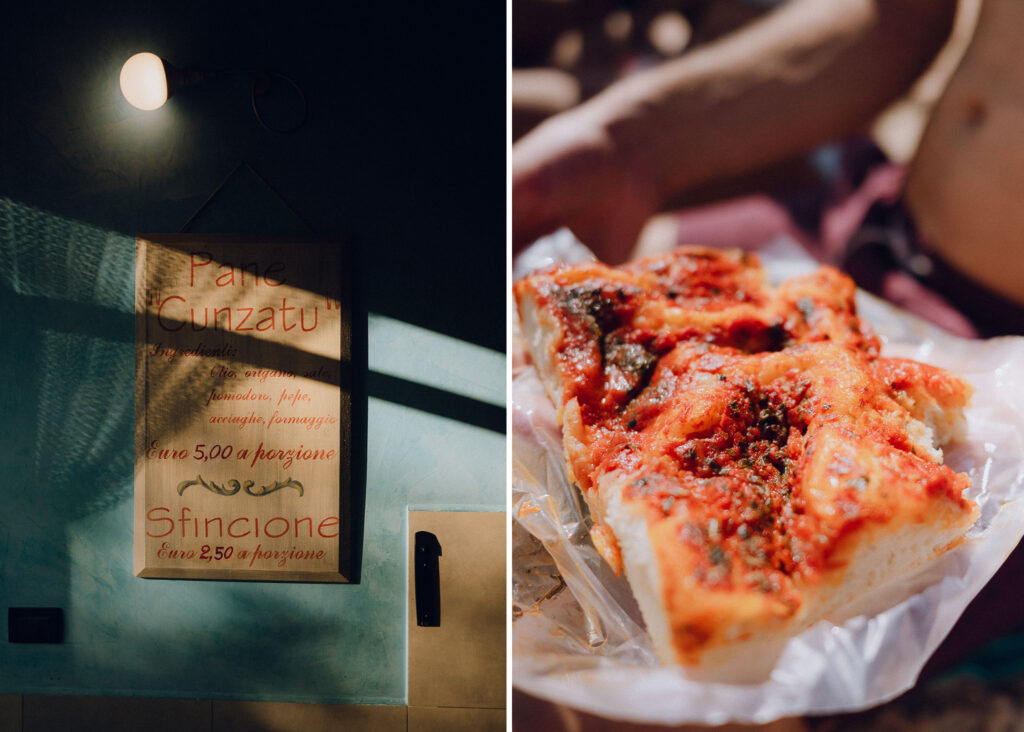
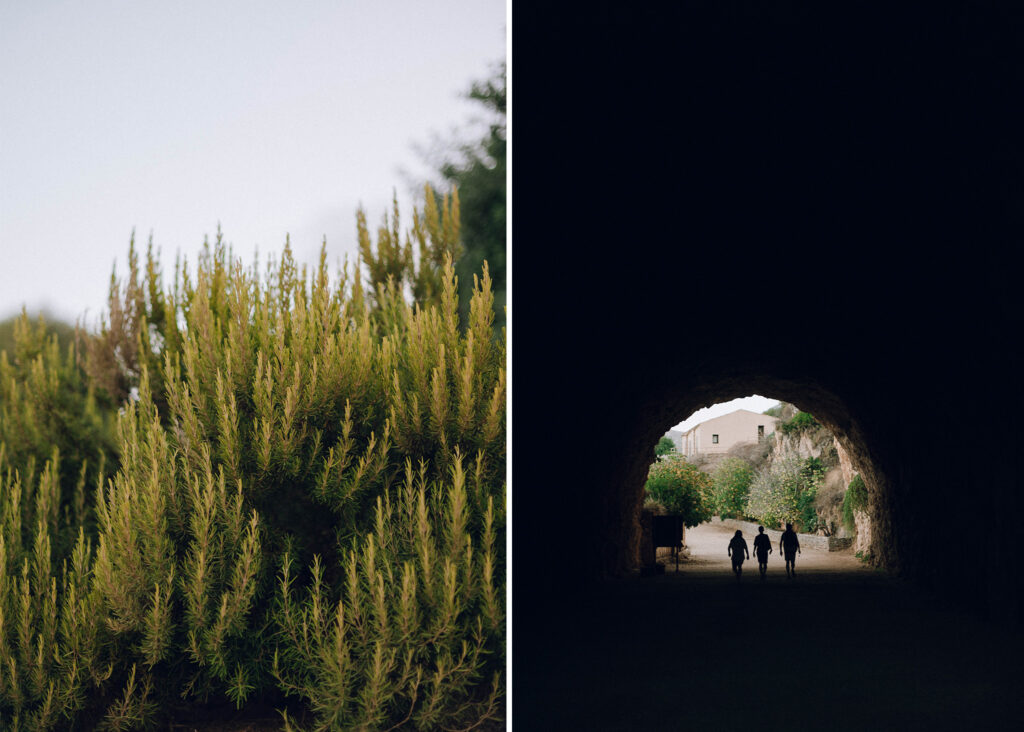
Continuing the journey, we stop at the beach of Macari, characterized by jagged cliffs, clear waters and the profile of the imposing Mount Cofano, before arriving in Erice, a medieval village that comes to life under the Sicilian sun, with its cobblestone streets, ancient walls and spectacular views of the coast and surrounding islands. It’s an enchanted place where you can get lost among the artisans’ stores, savour traditional sweets, such as genovesi and cassatelle, and be transported back in time.
We descended from Erice to arrive at sunset at the Saline di Marsala, where you can explore the ancient salt pans and discover the process of salt production, among windmills and evaporation ponds. For dinner we chose to eat not far from the Saline, in a quieter and more atmospheric setting, at Assud.
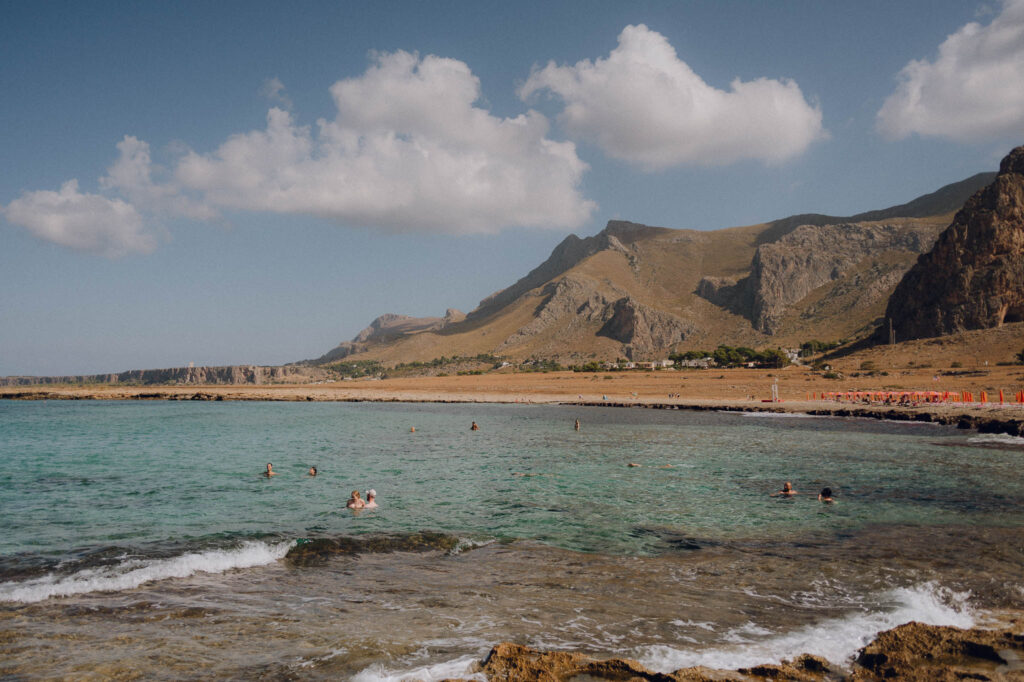
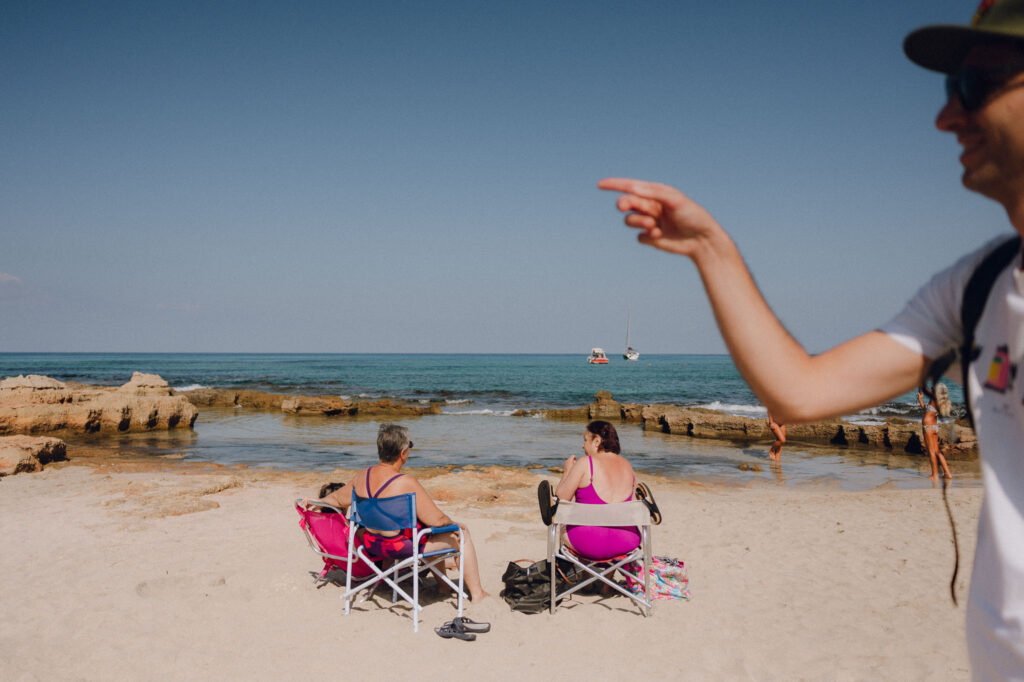
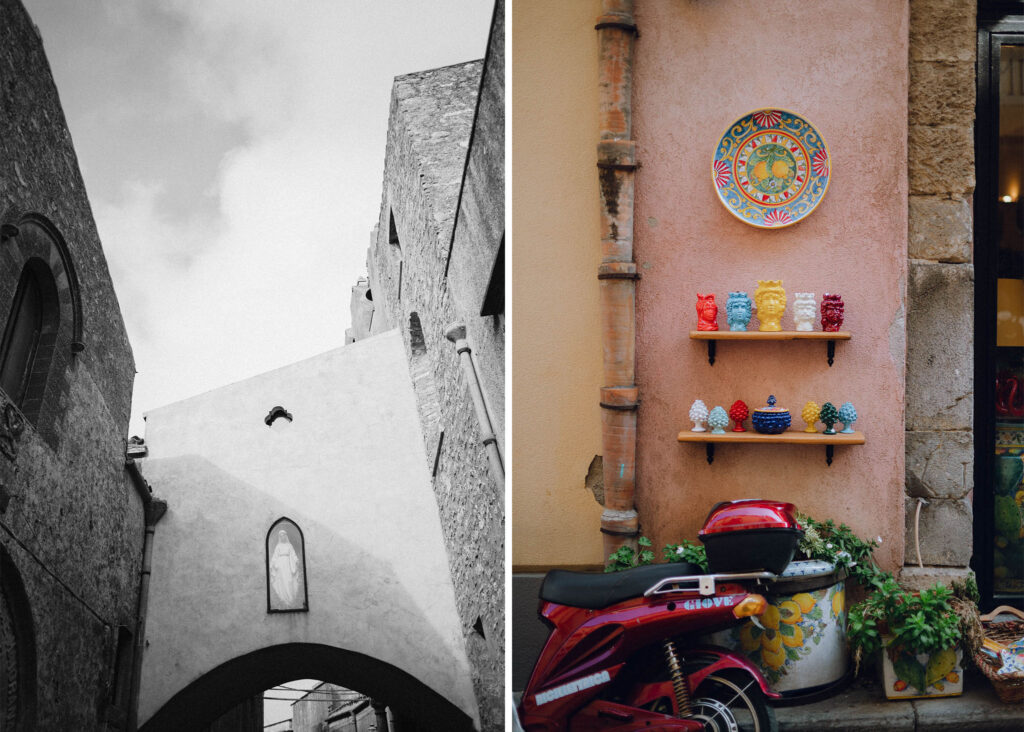
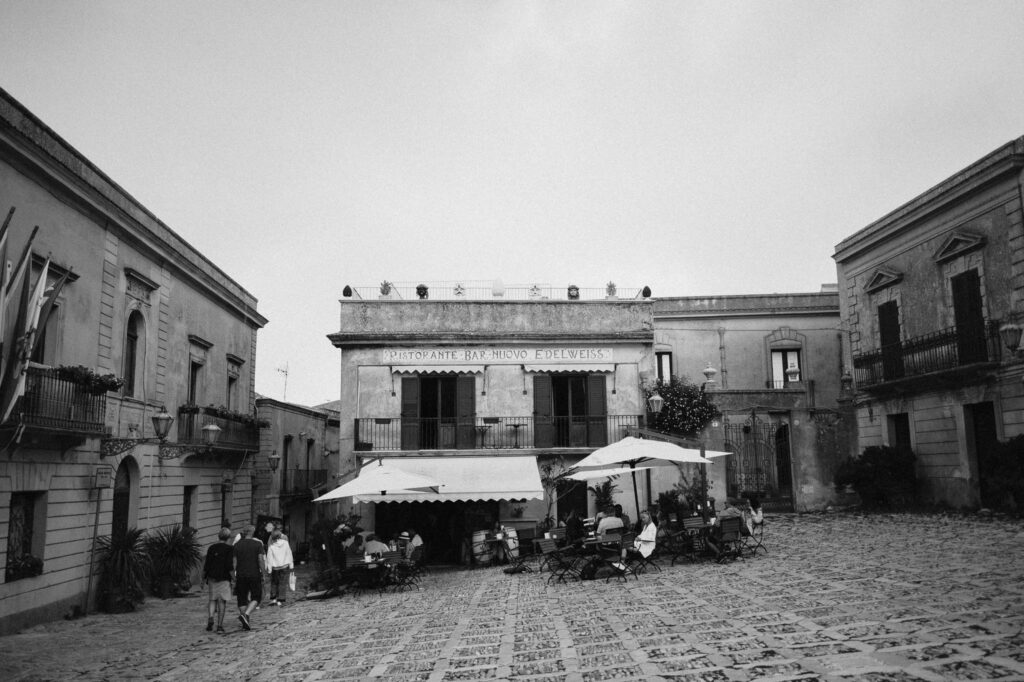
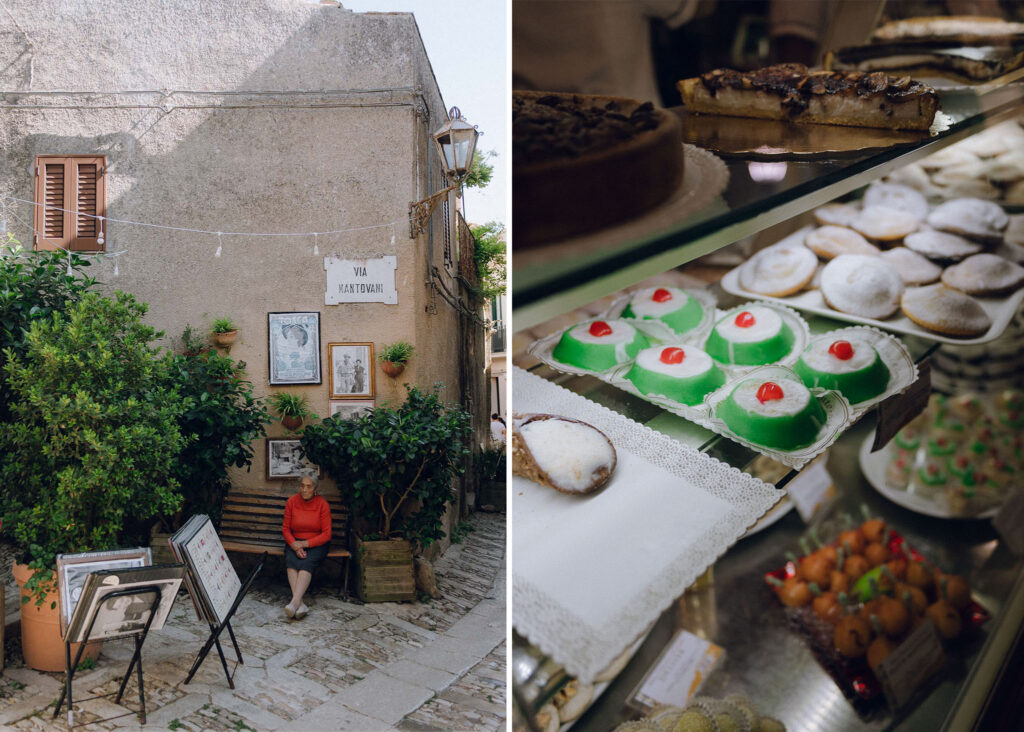
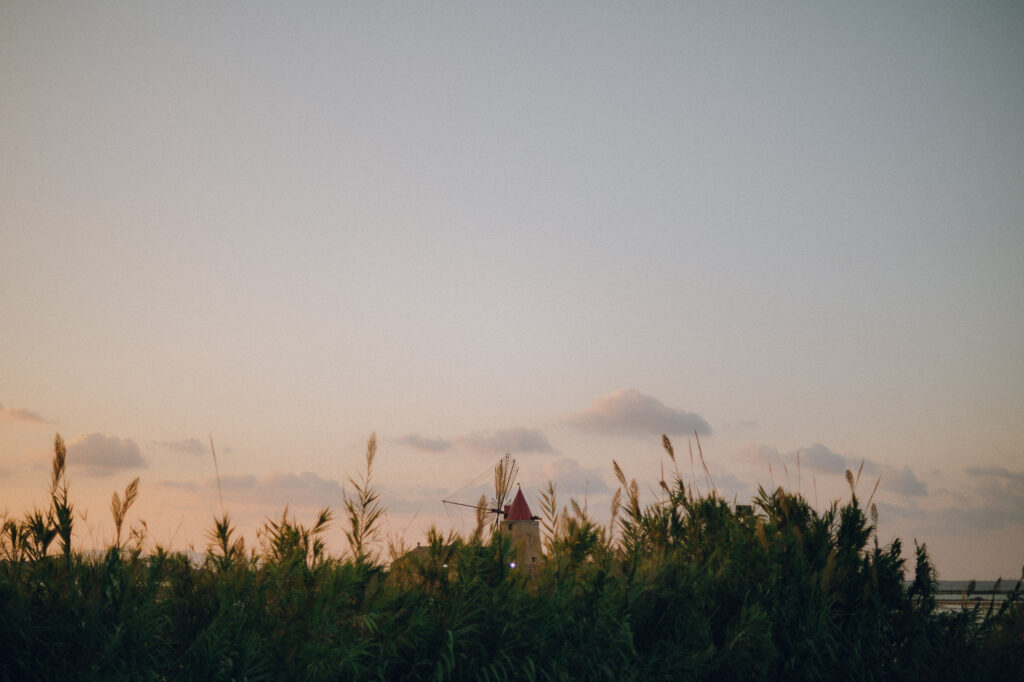
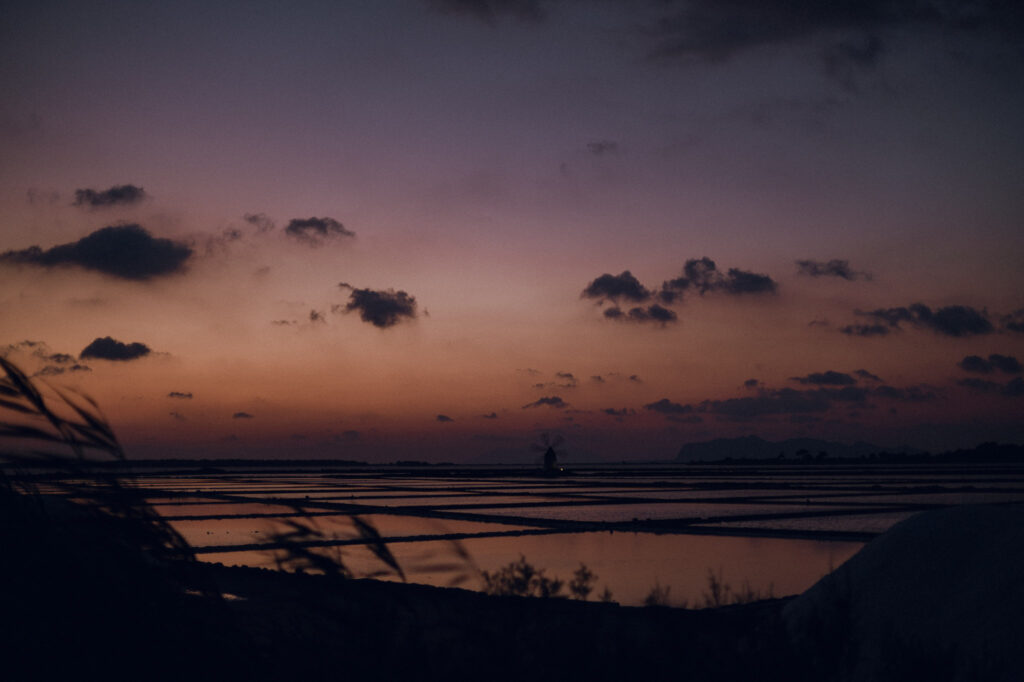
On the way back to Palermo, there are two more important stops: Gibellina Nuova and Vecchia and the Temple of Segesta.
Gibellina Nuova is a unique piece of architecture, founded in the 1970s after the devastating earthquake of 1968, this town represented a bold and innovative rebirth. The architecture of Gibellina Nuova is characterized by wide open spaces, clean lines and abstract geometries, and overall it’s a “non-place.” Hard to say “beautiful,” certainly architecturally interesting. Definitely more pleasant is Burri’s Cretto, one of the world’s most extensive works of Contemporary Art. The monument rises above the rubble of Gibellina Vecchia, destroyed in 1968 by an earthquake. From above, the work appears as a series of concrete fractures in the ground, whose artistic value lies in freezing the historical memory of a town.
And while Gibellina Vecchia symbolises the fragility of man in front of the force of nature, the Temple of Segesta represents the grandeur and ingenuity of ancient civilization. The Doric temple has withstood the passage of centuries, preserving its beauty intact and continuing to enchant visitors with its impressive architecture and striking location. The late afternoon the soft light certainly enriched our visit to the Temple.
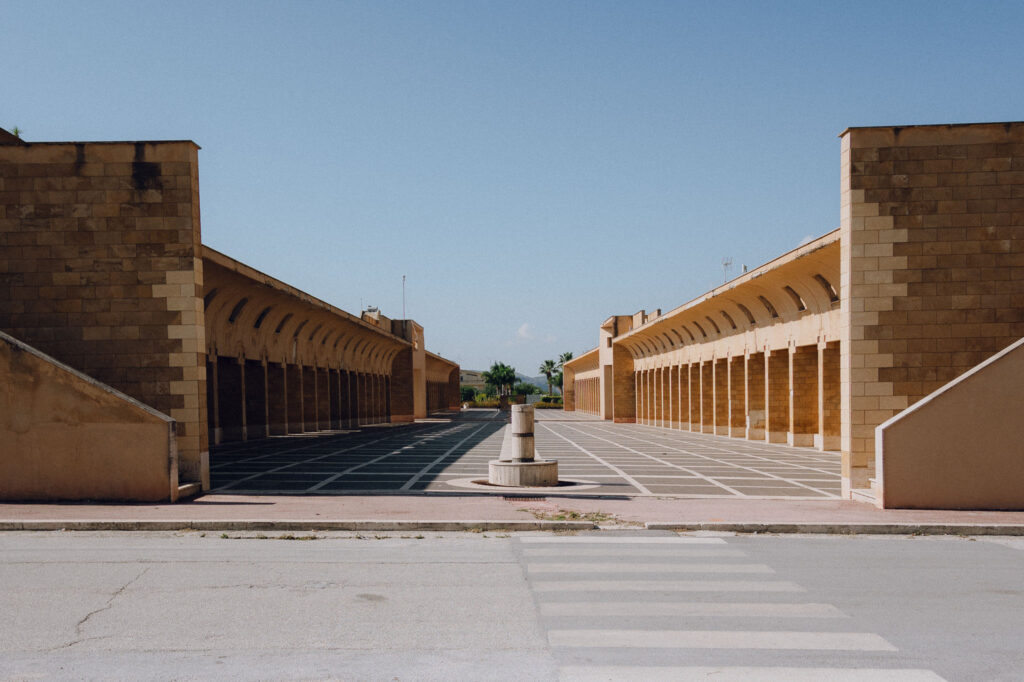
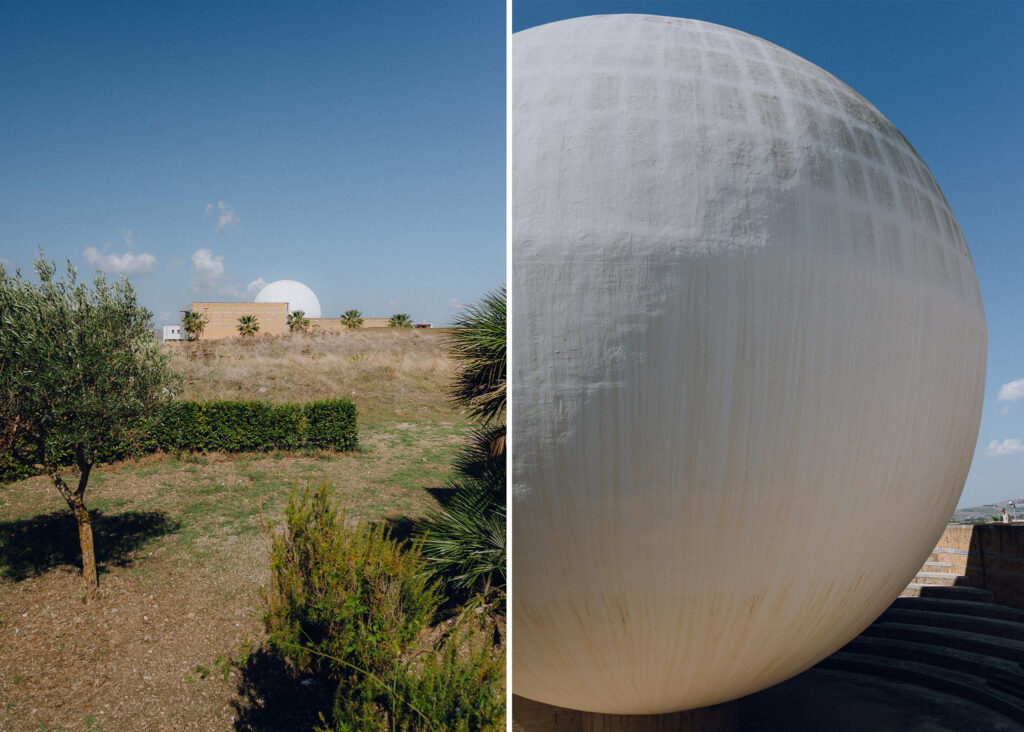
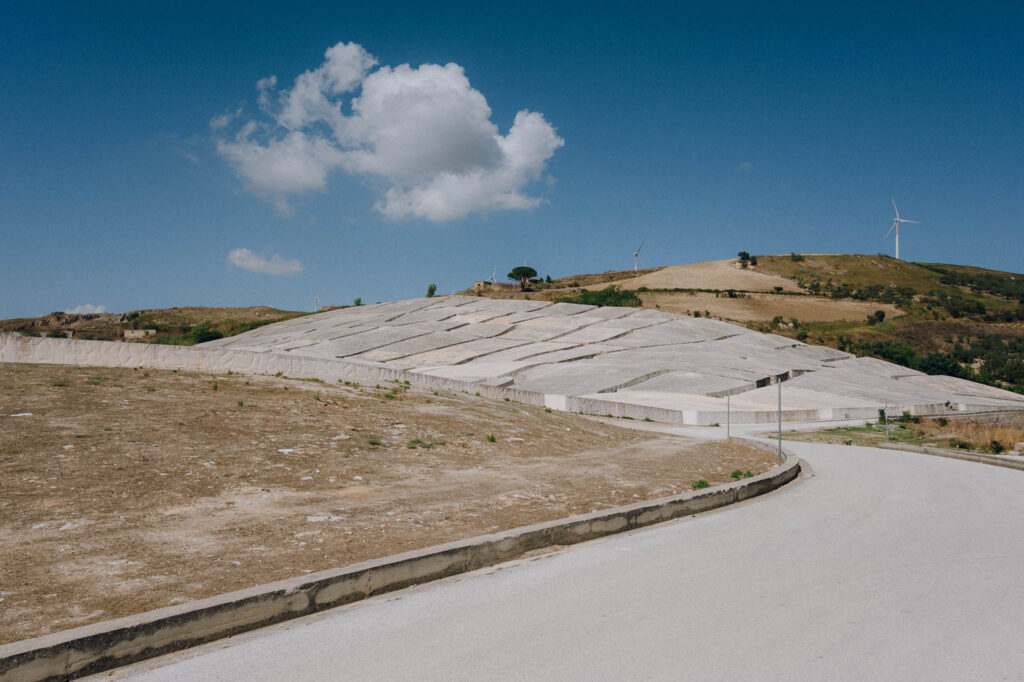
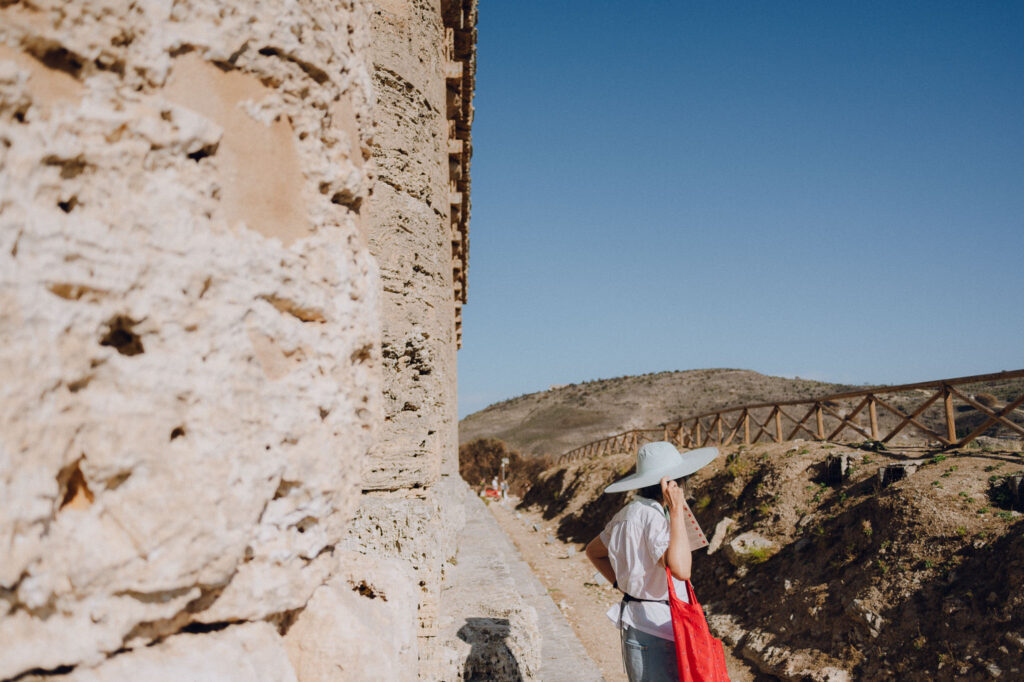
As we head back towards Palermo, our minds are still retracing the experience we just had.
Every place we visited gave us precious memories and unforgettable moments, while every encounter with the locals enriched us with their hospitality and human warmth. Sicily offered us a journey full of emotions, discoveries and connections that we will cherish forever.
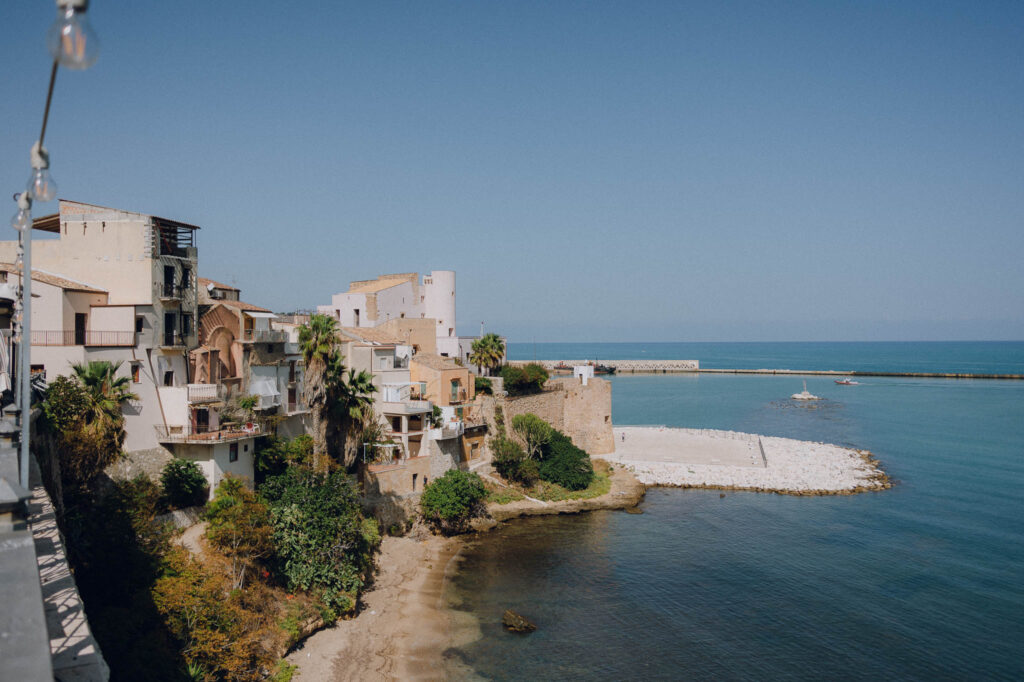
Colors, scents, flavors, welcoming faces: Morocco is love at first sight. As frequent visitors of this magnificent country, we are…
When we talk about Val di Funes, the first thing that come to our minds are its fairy-tale landscapes and…
“As kids, when my mother would make burek, the dough was so big that she would spread it in an…

